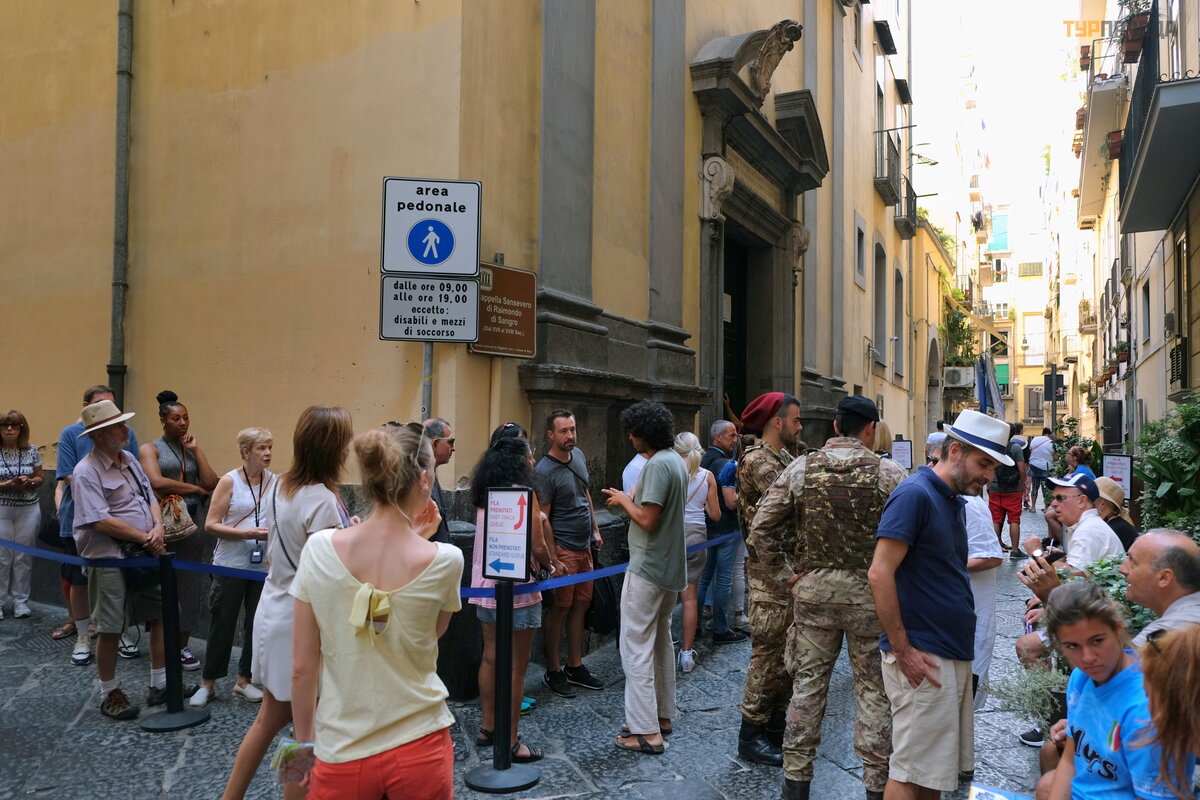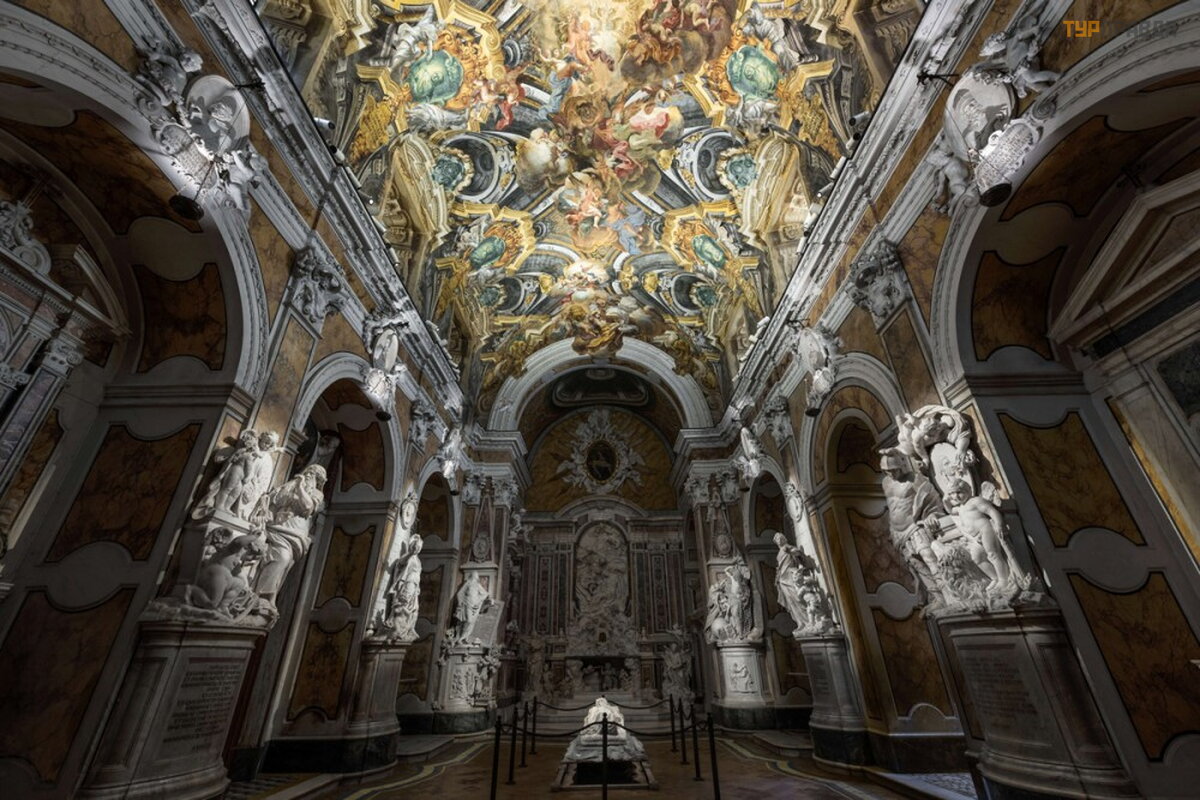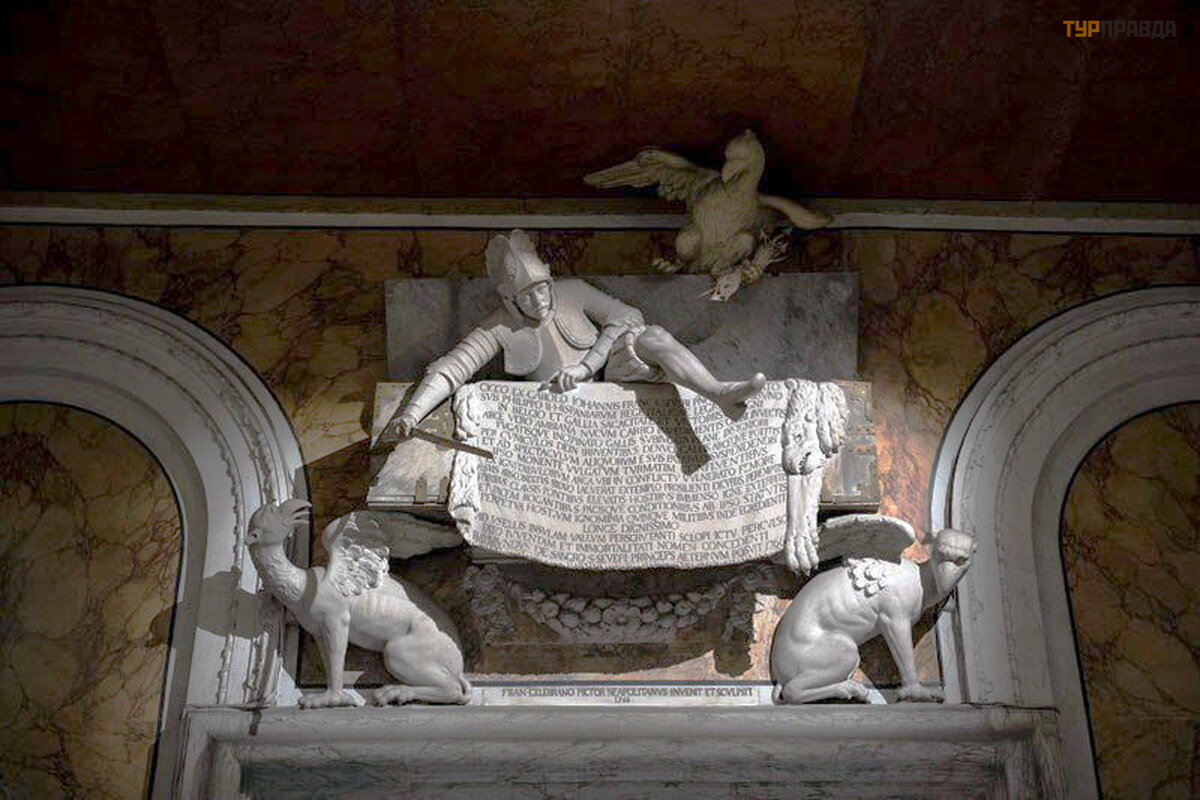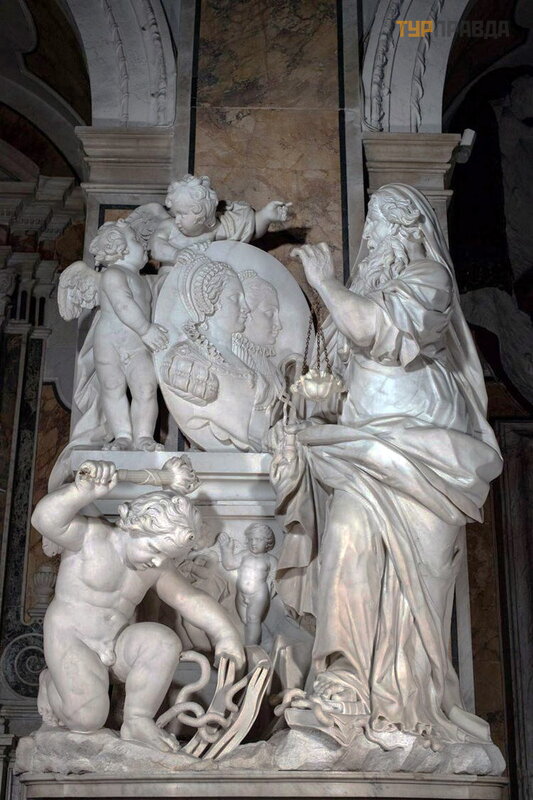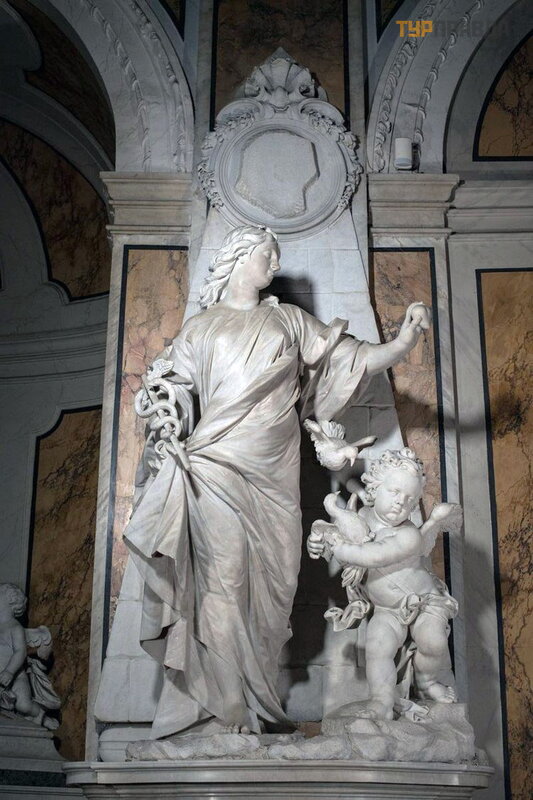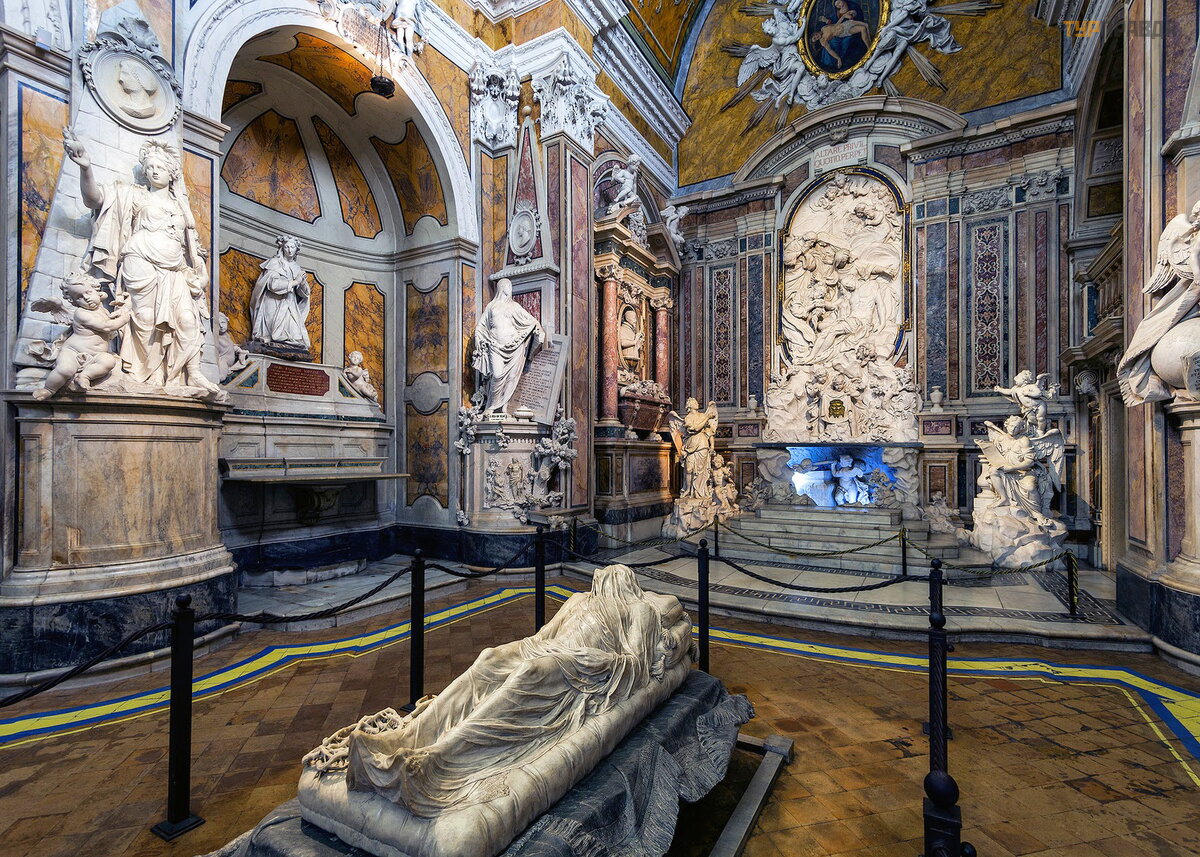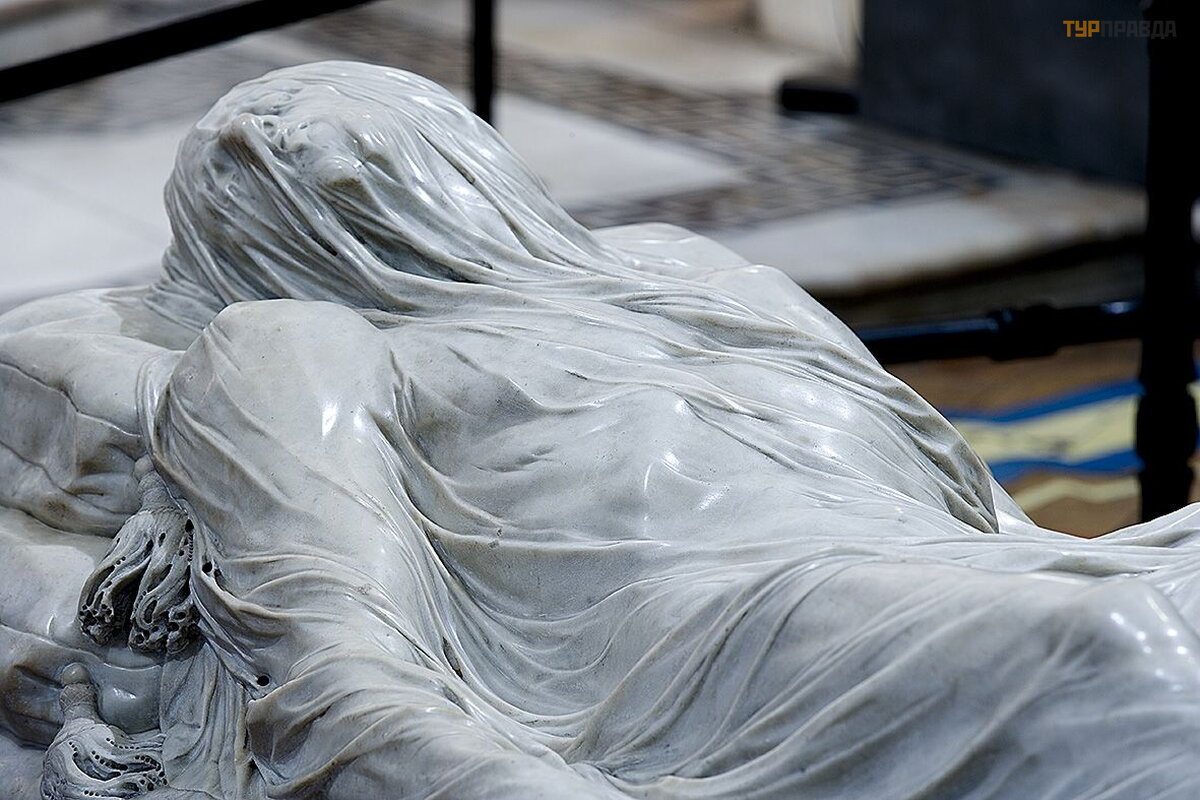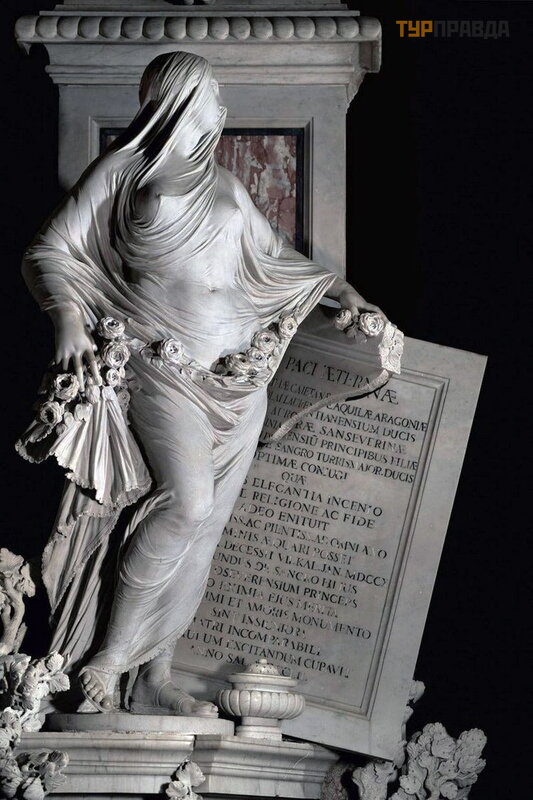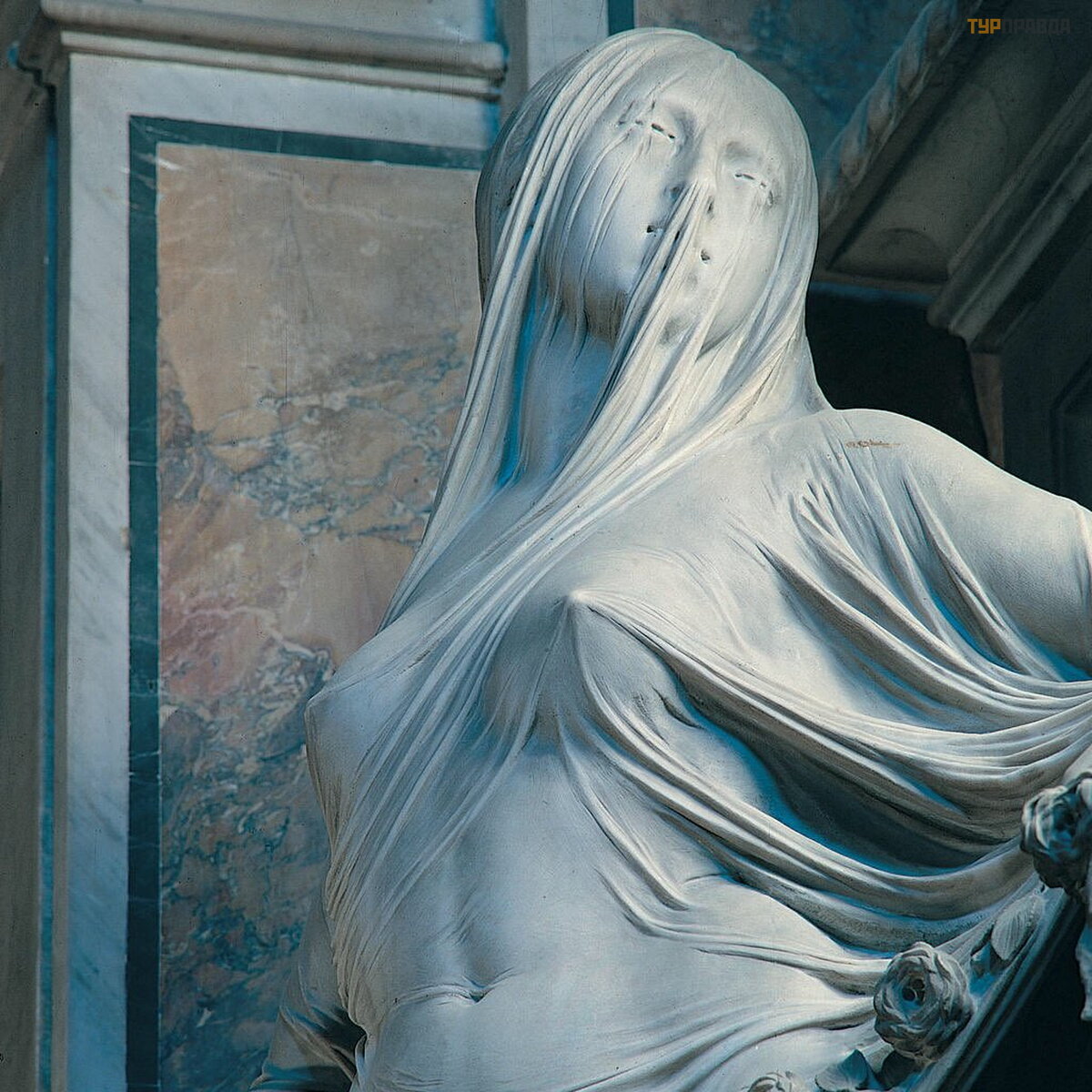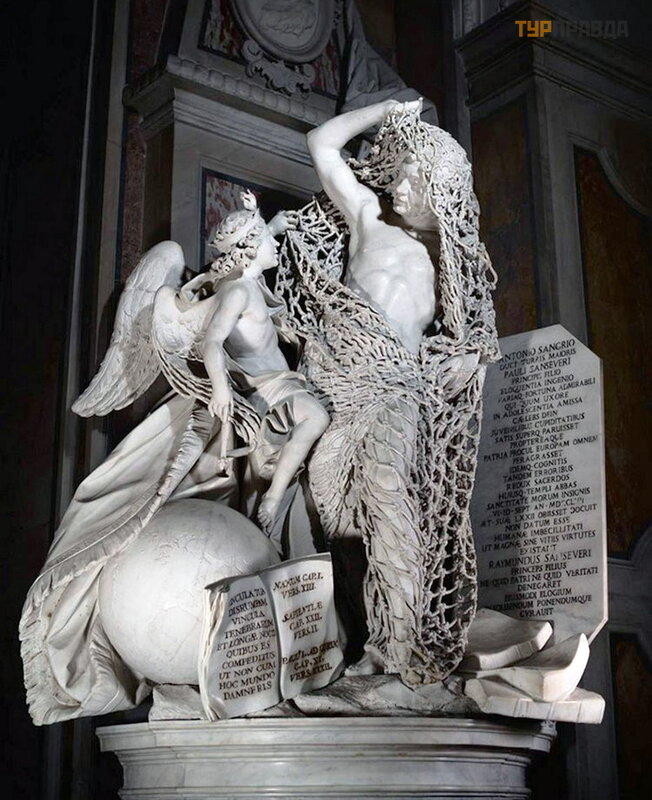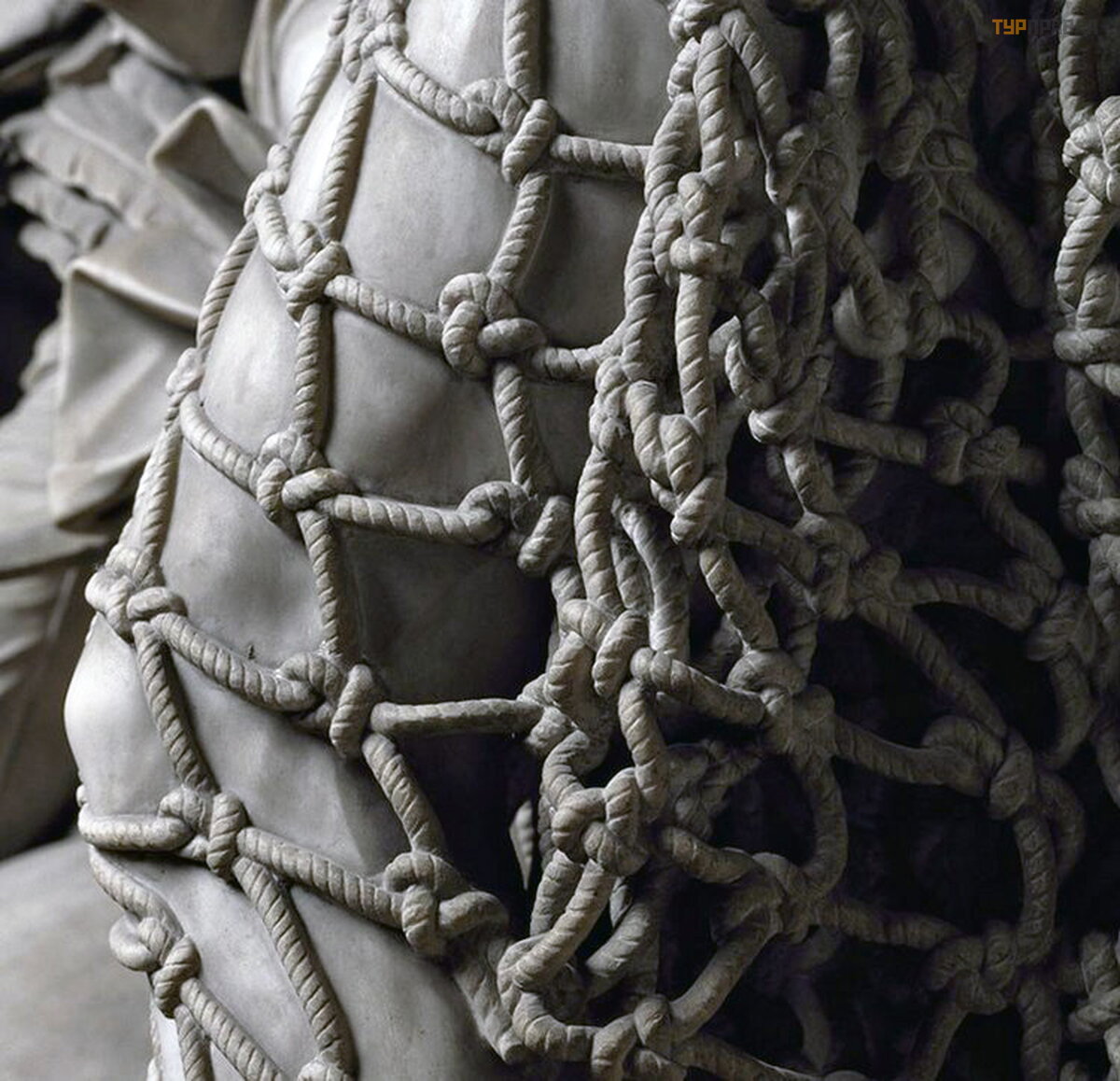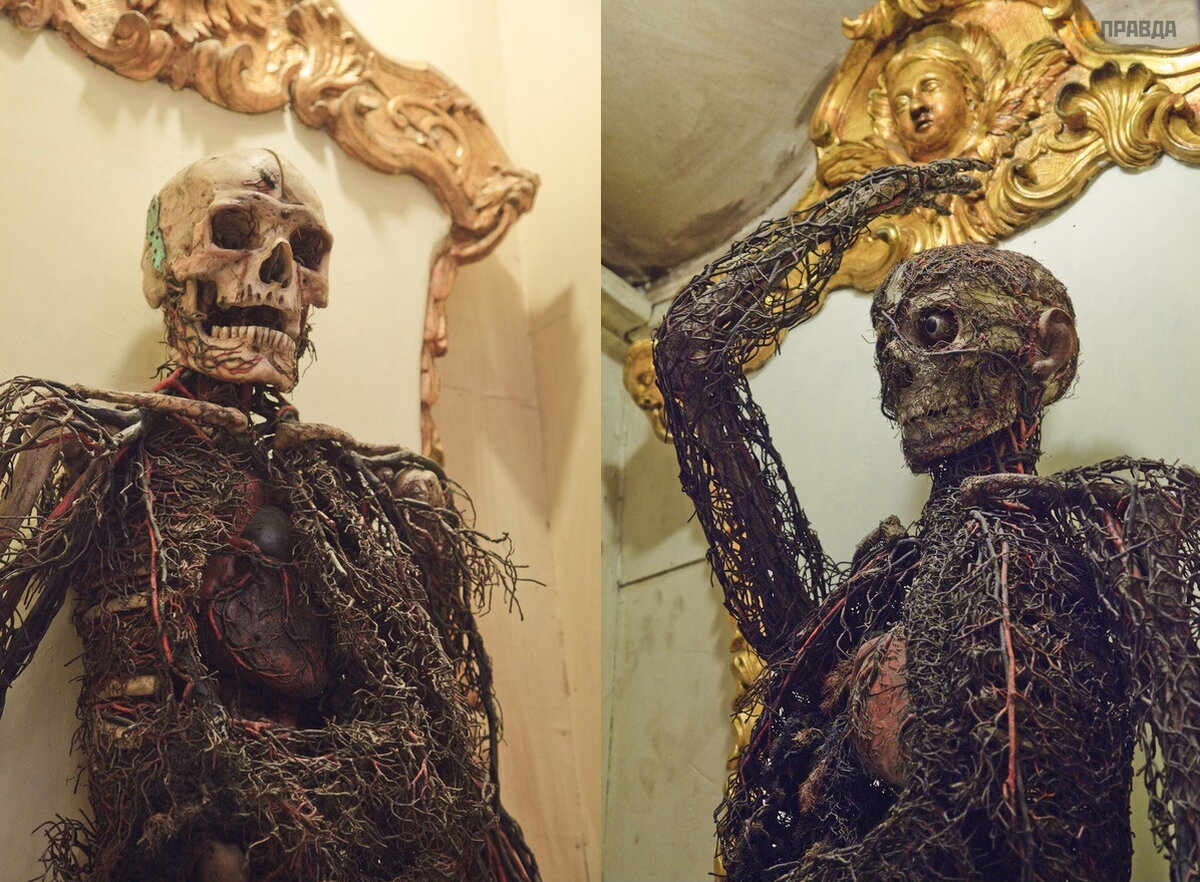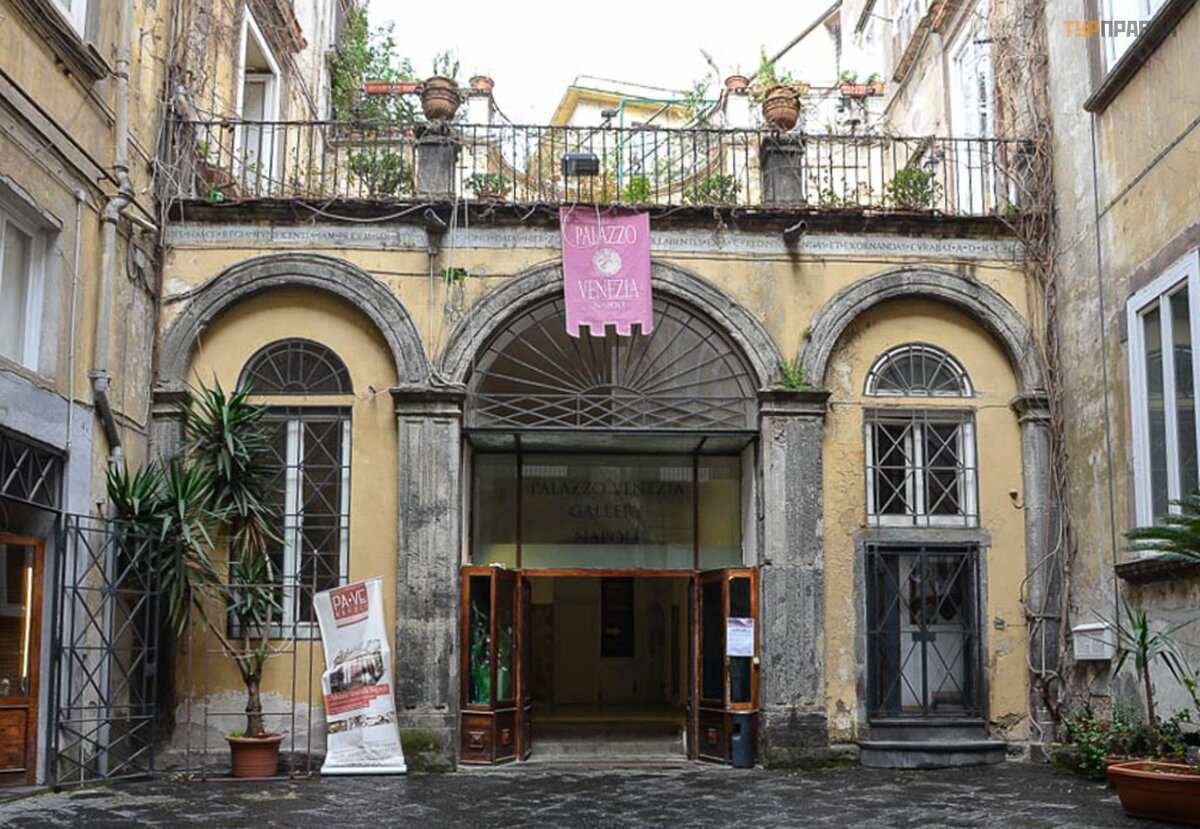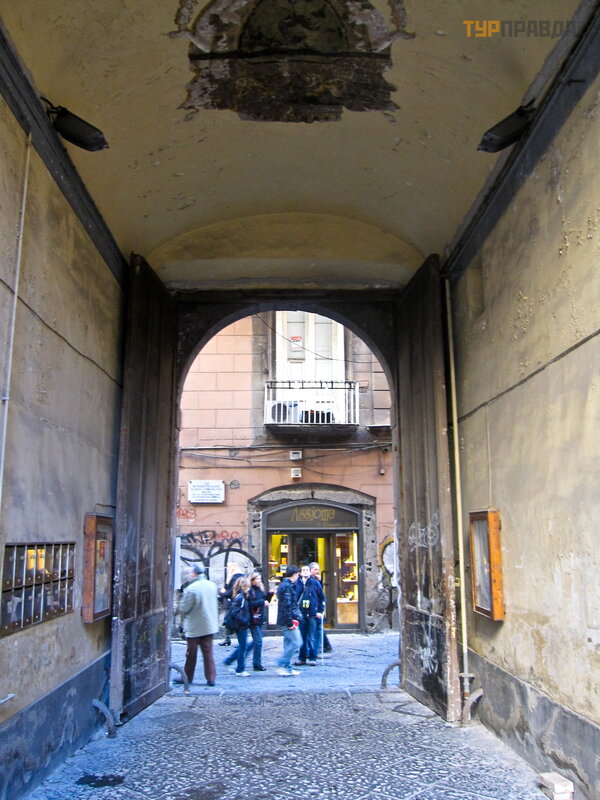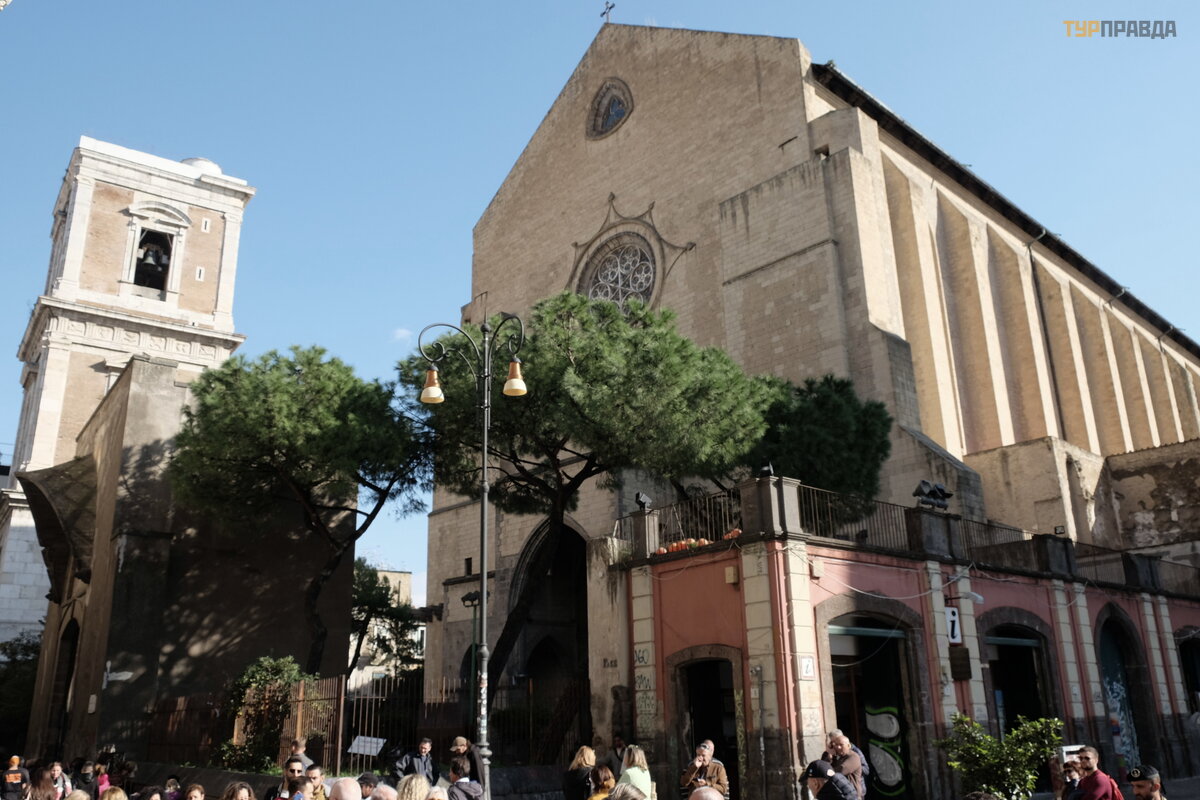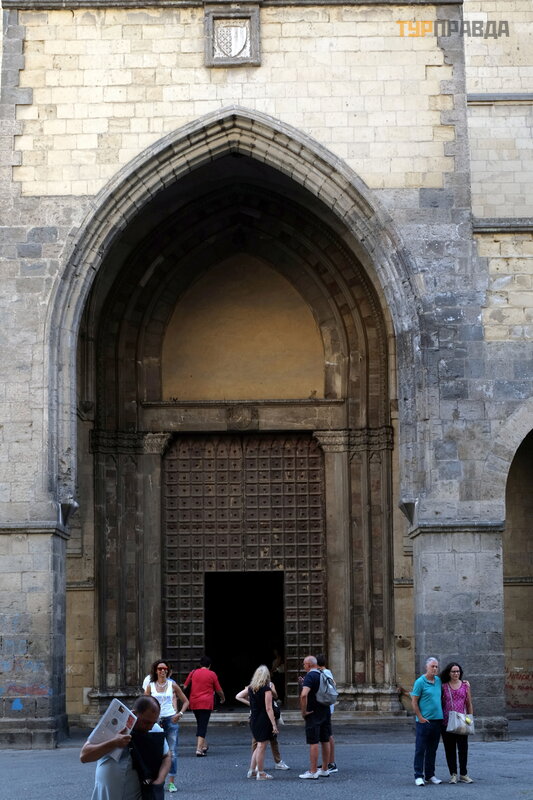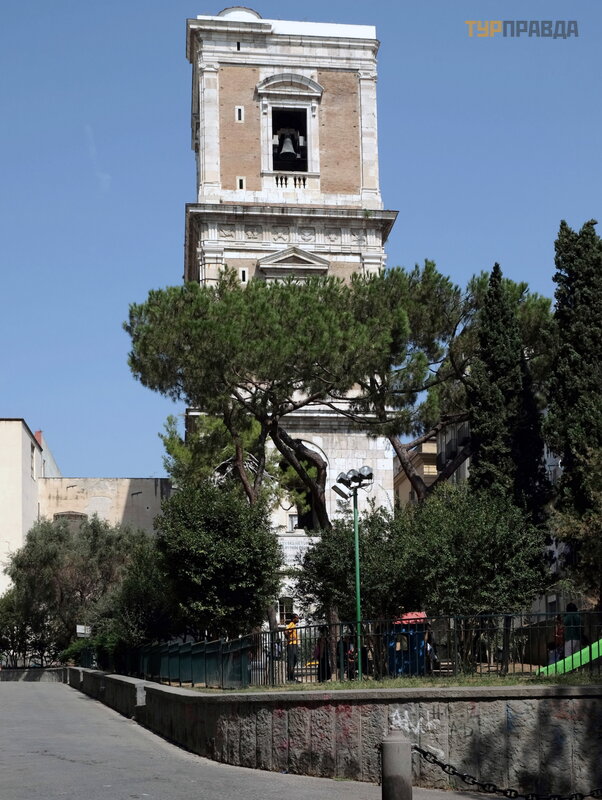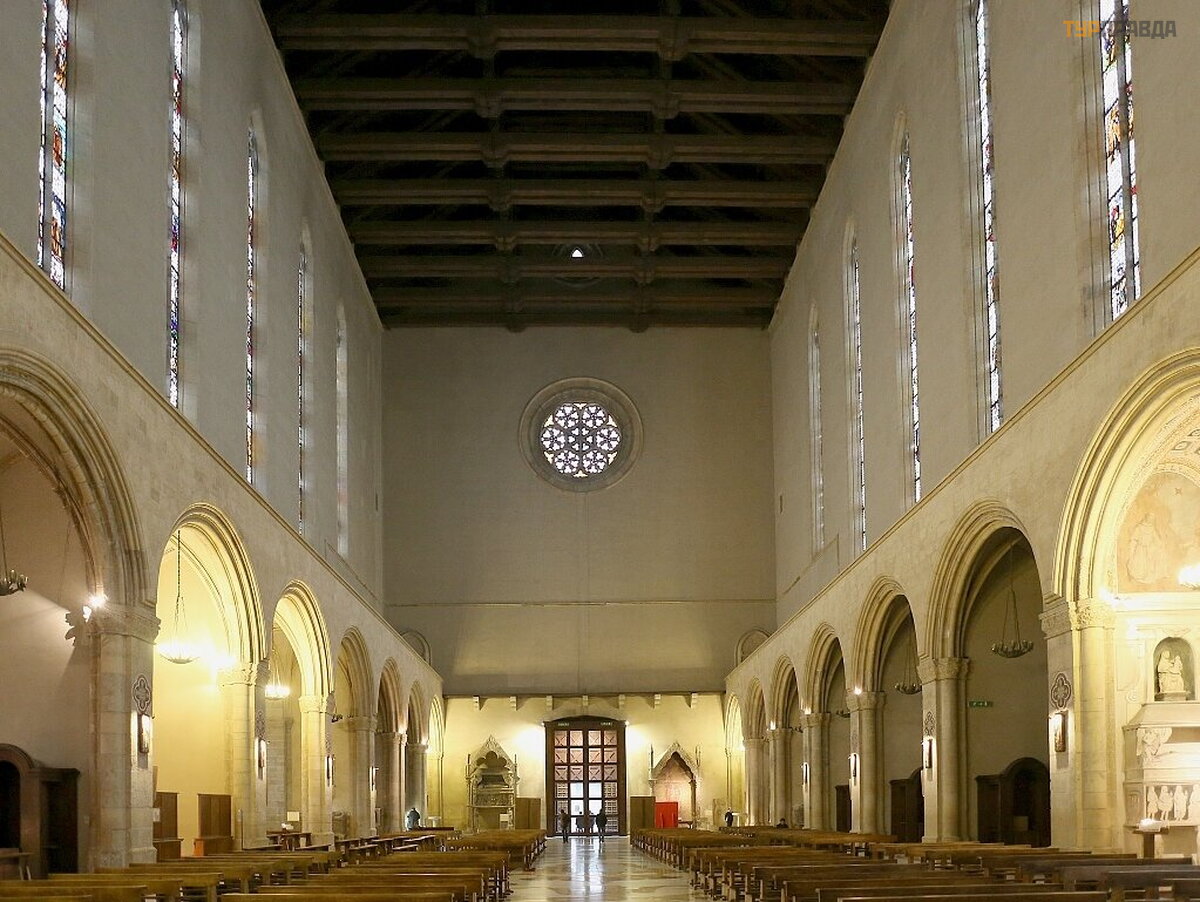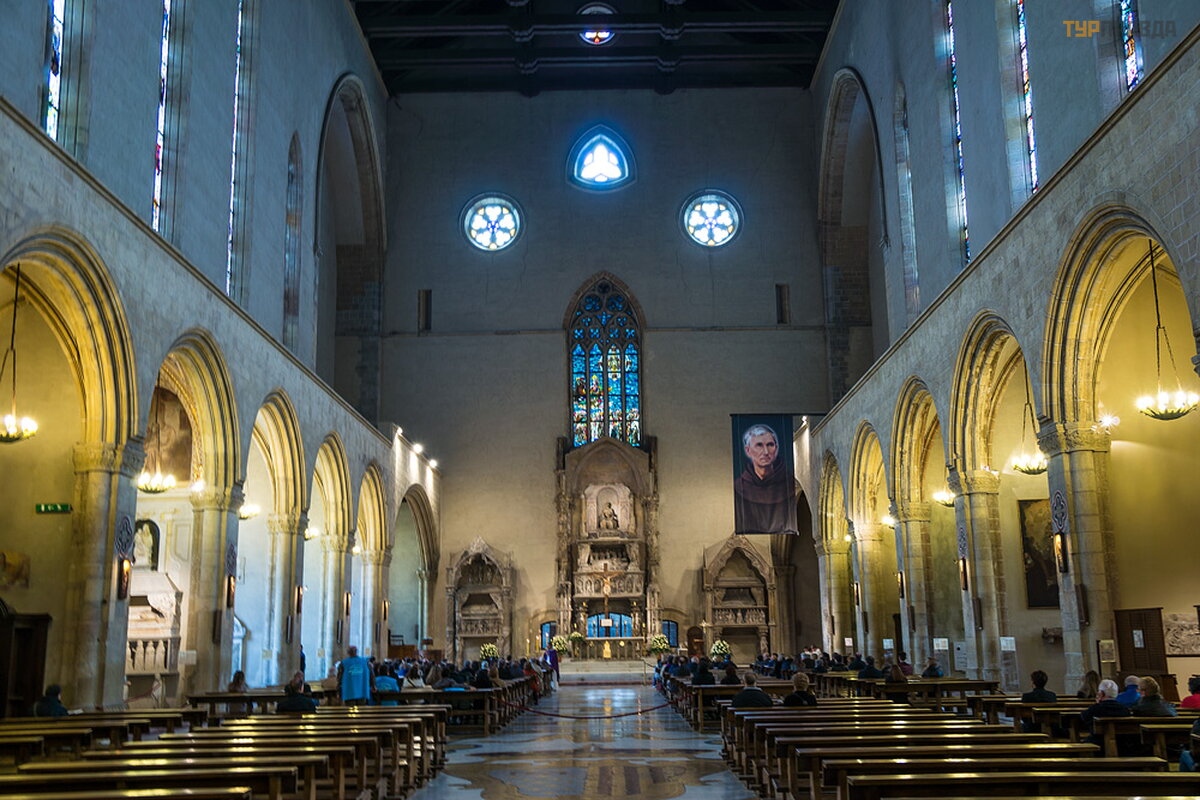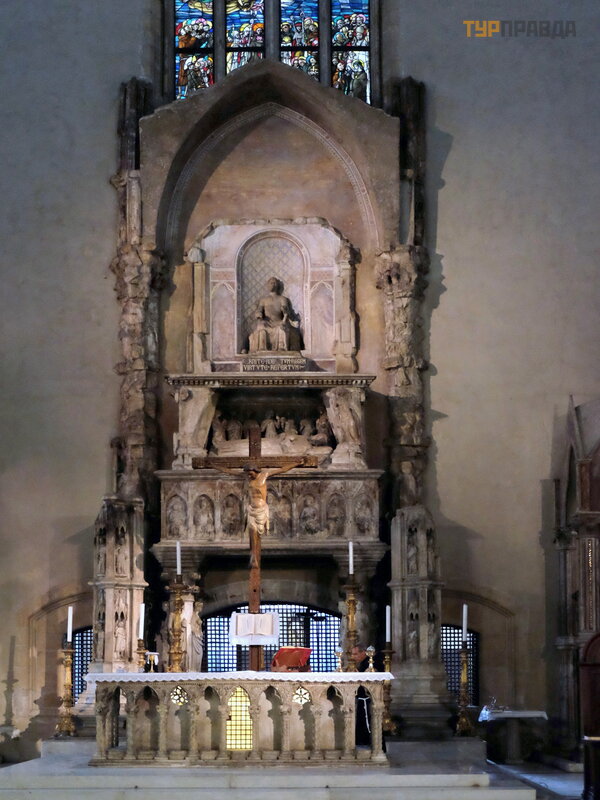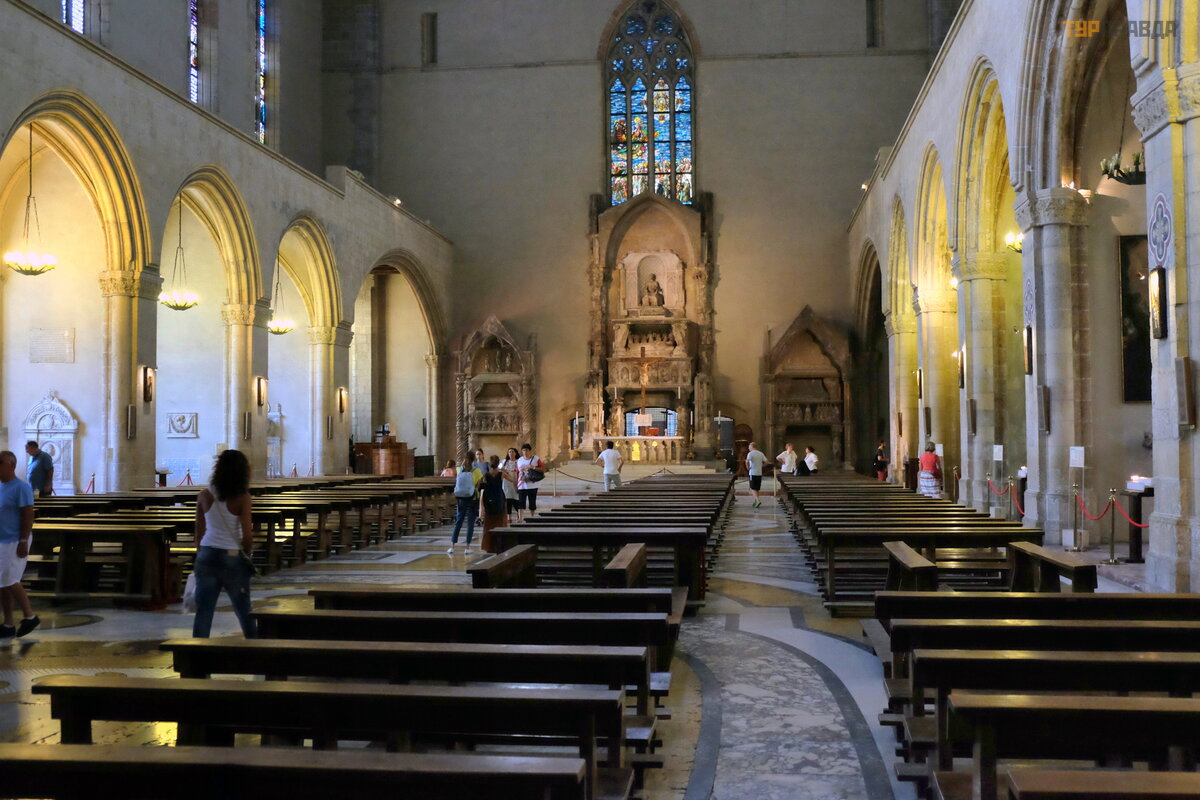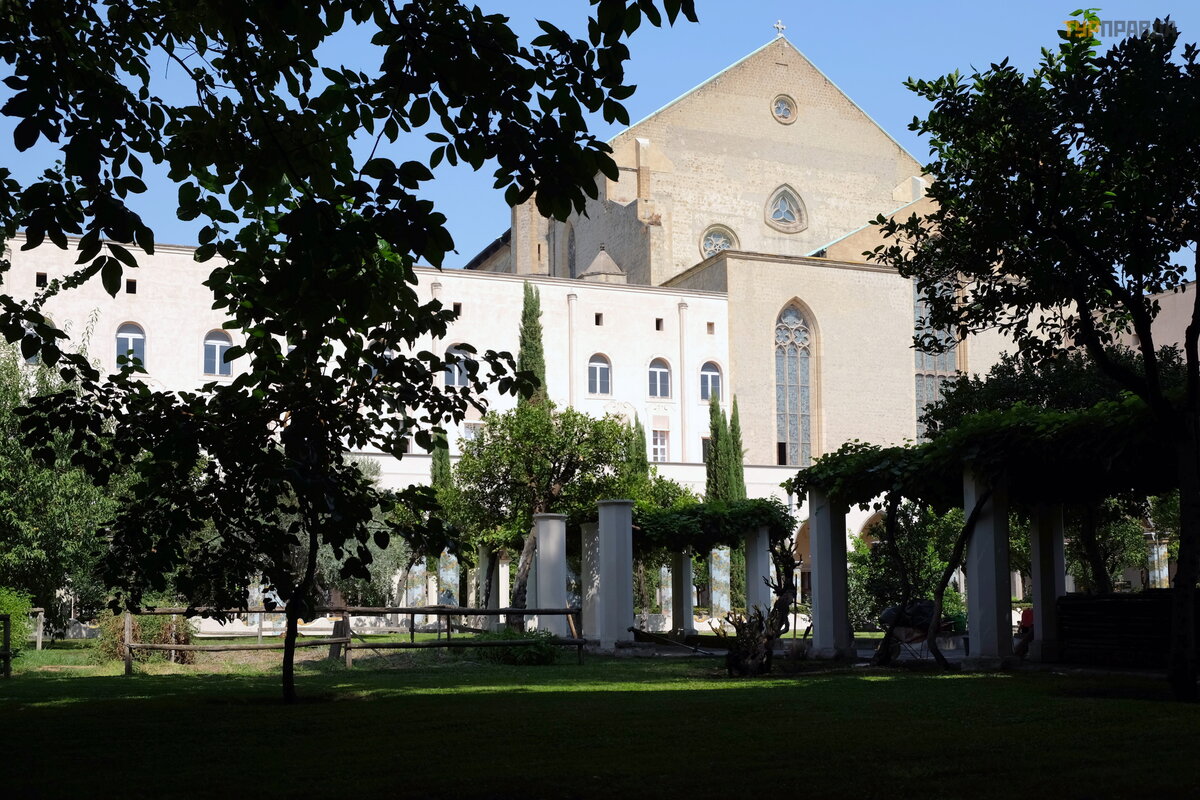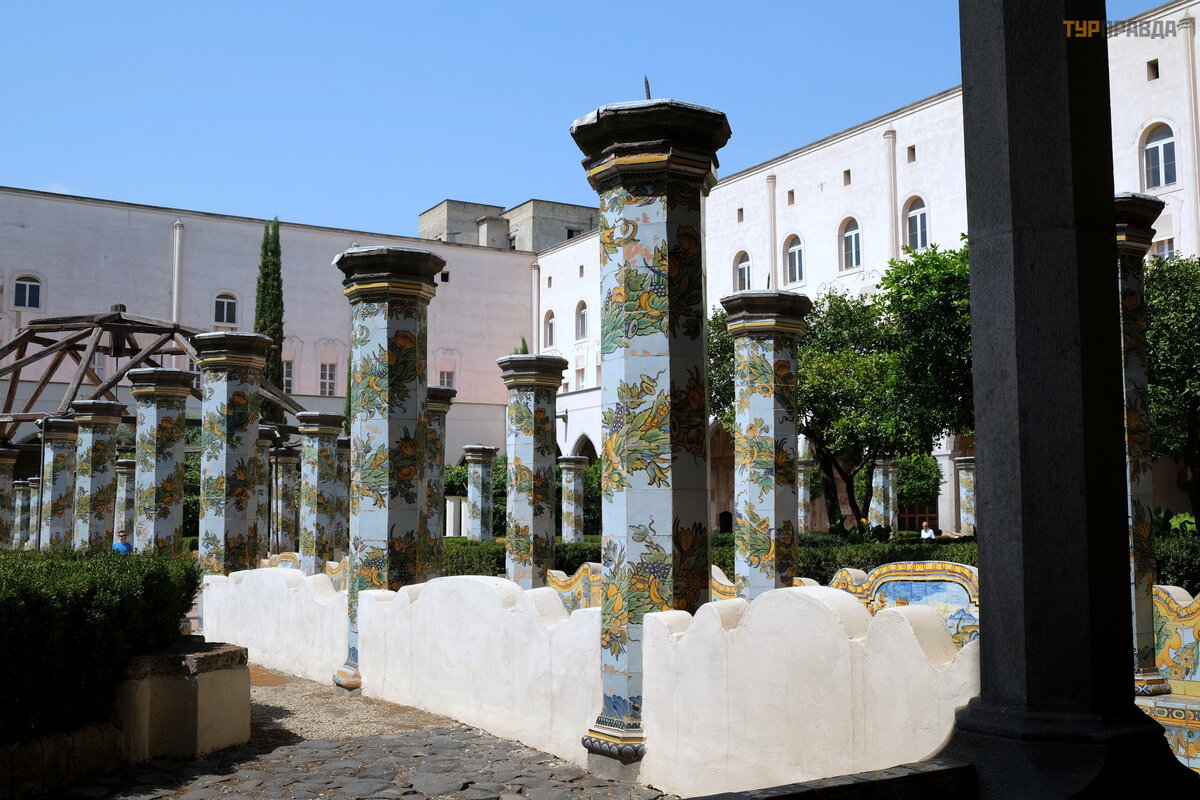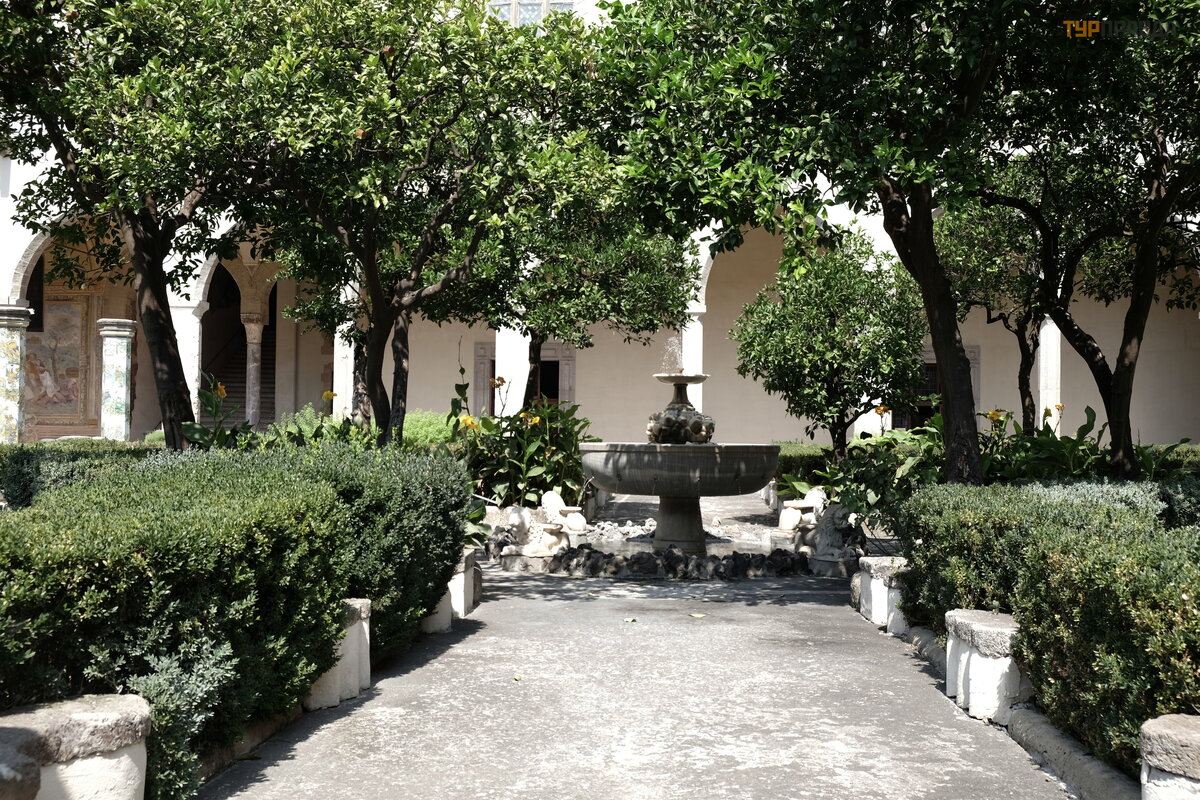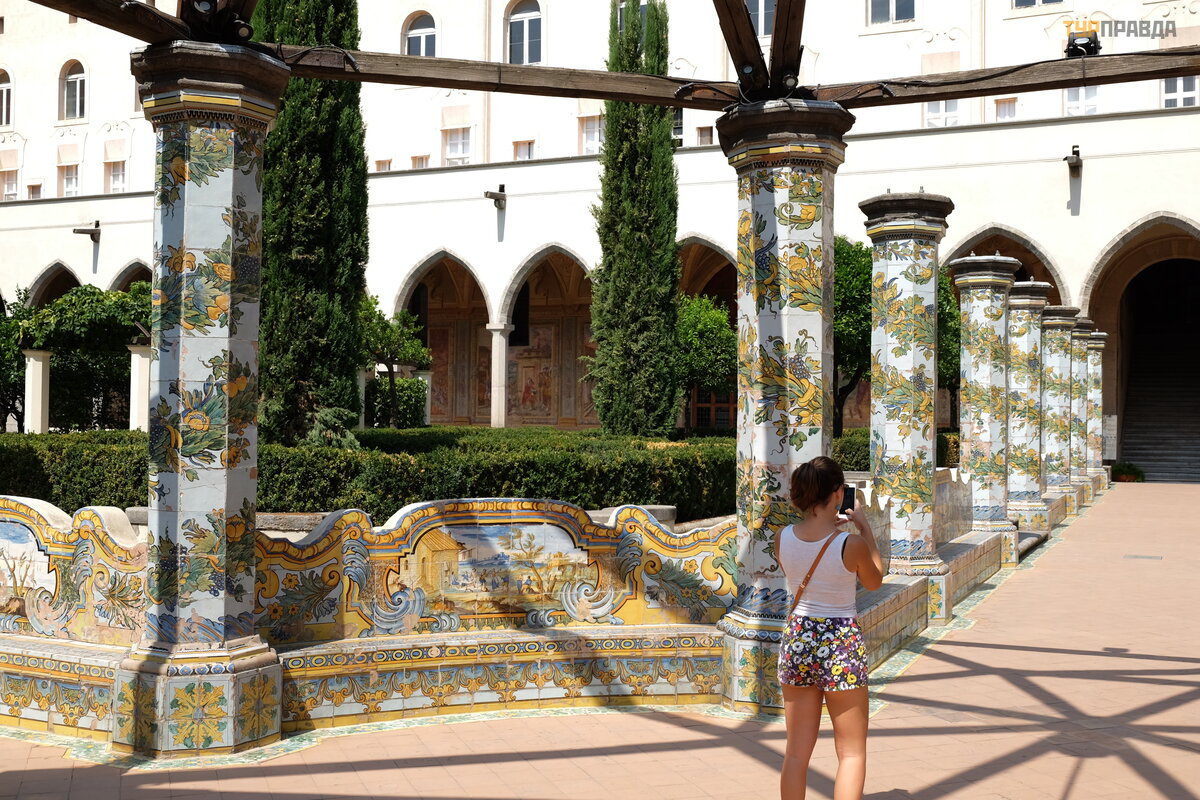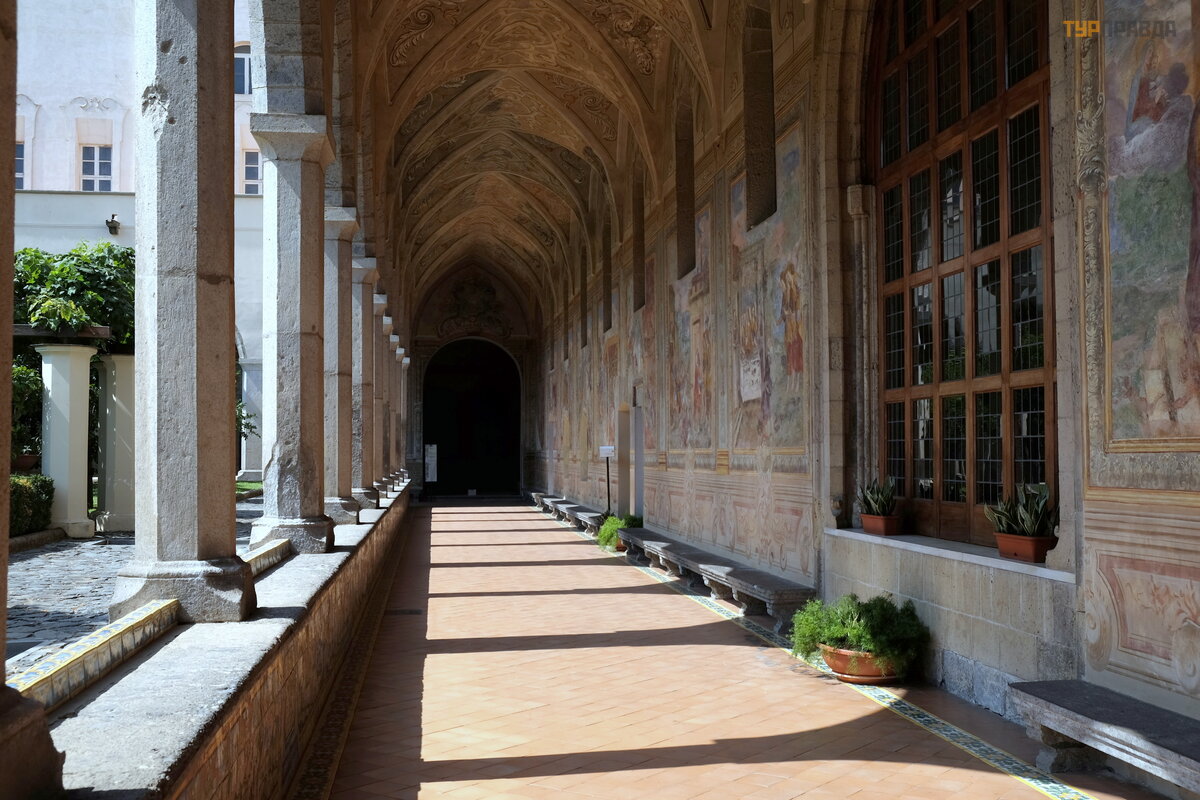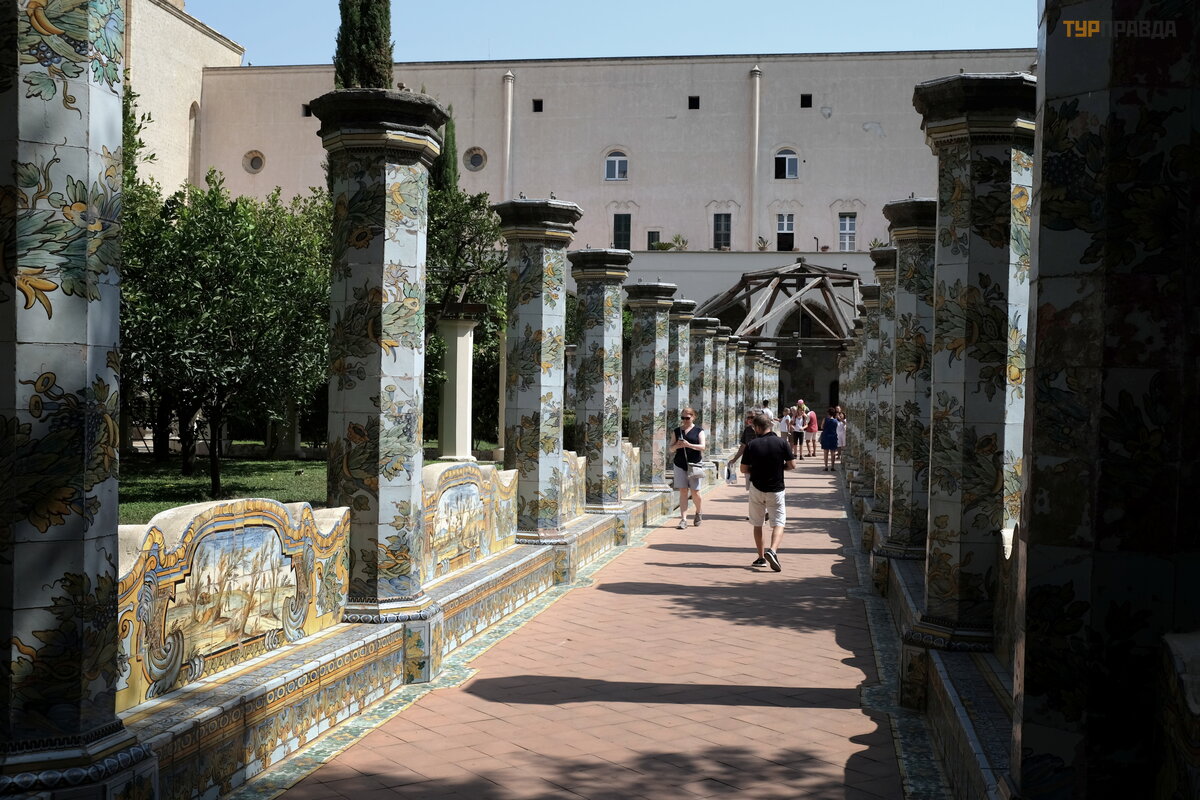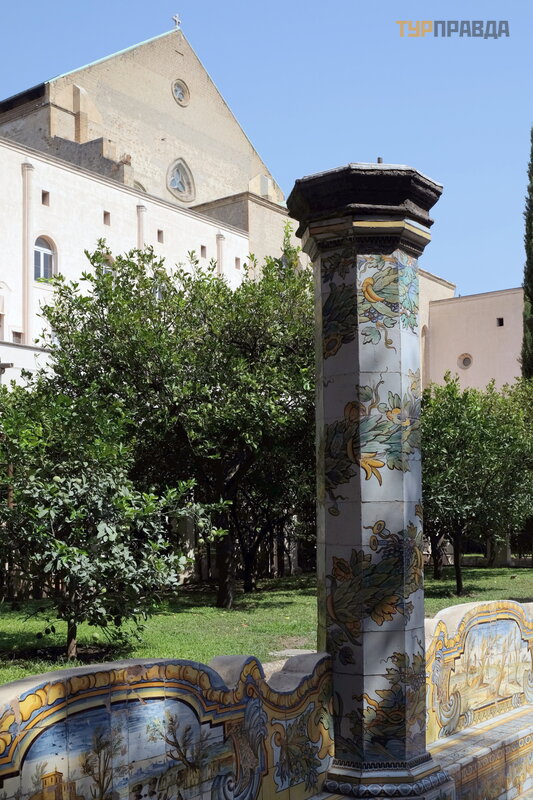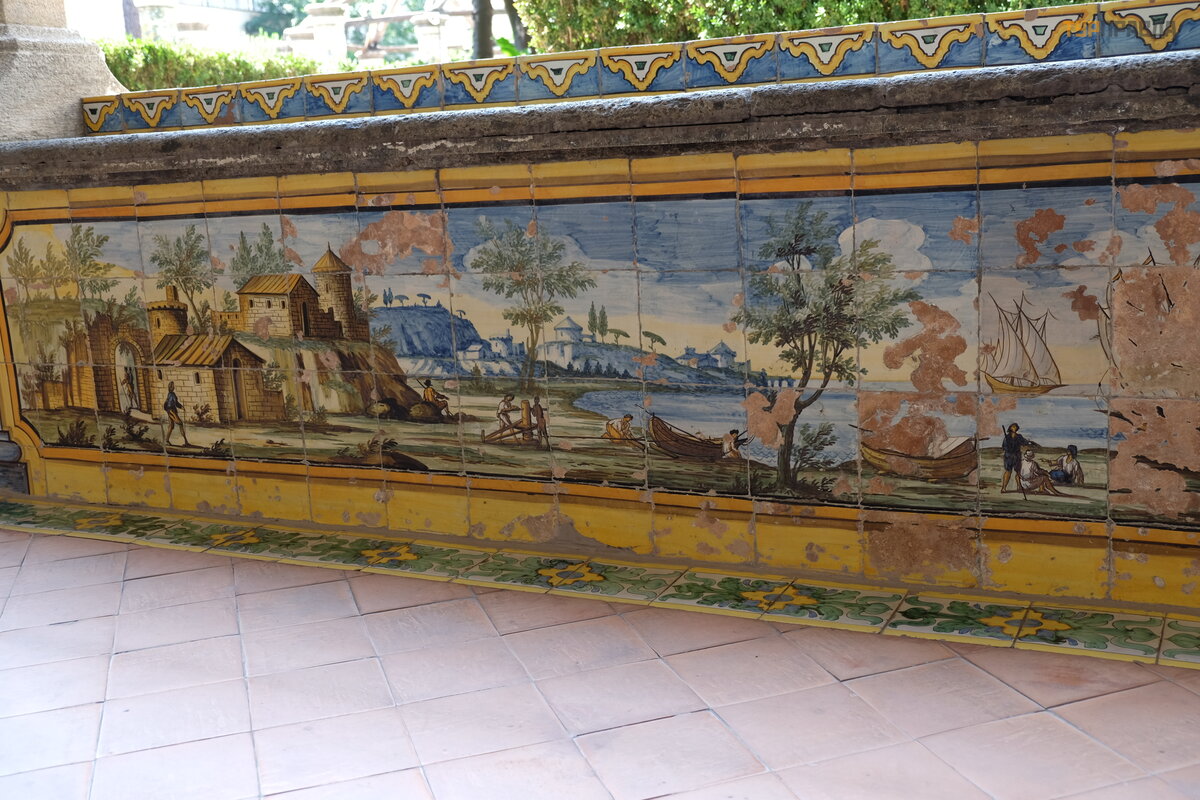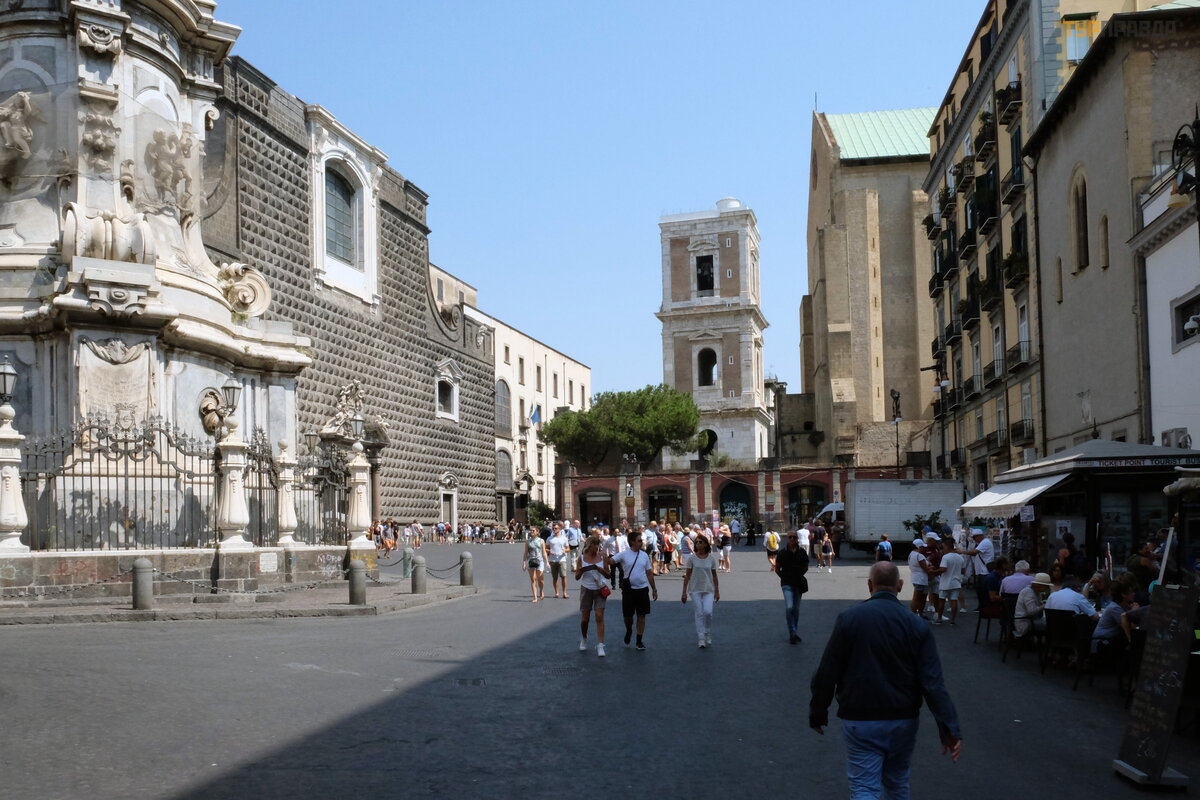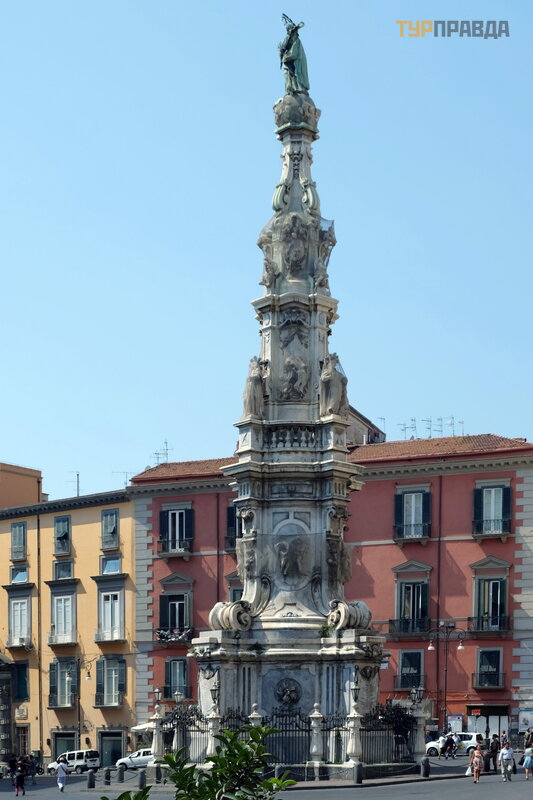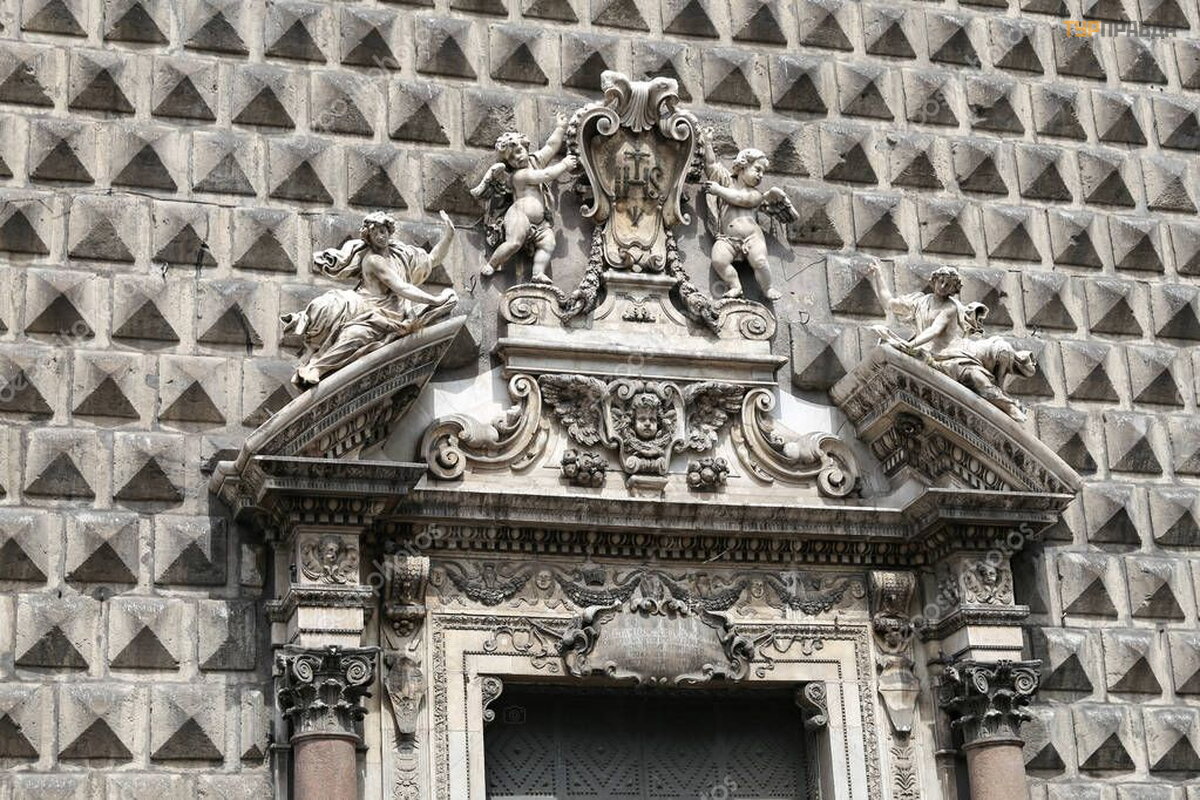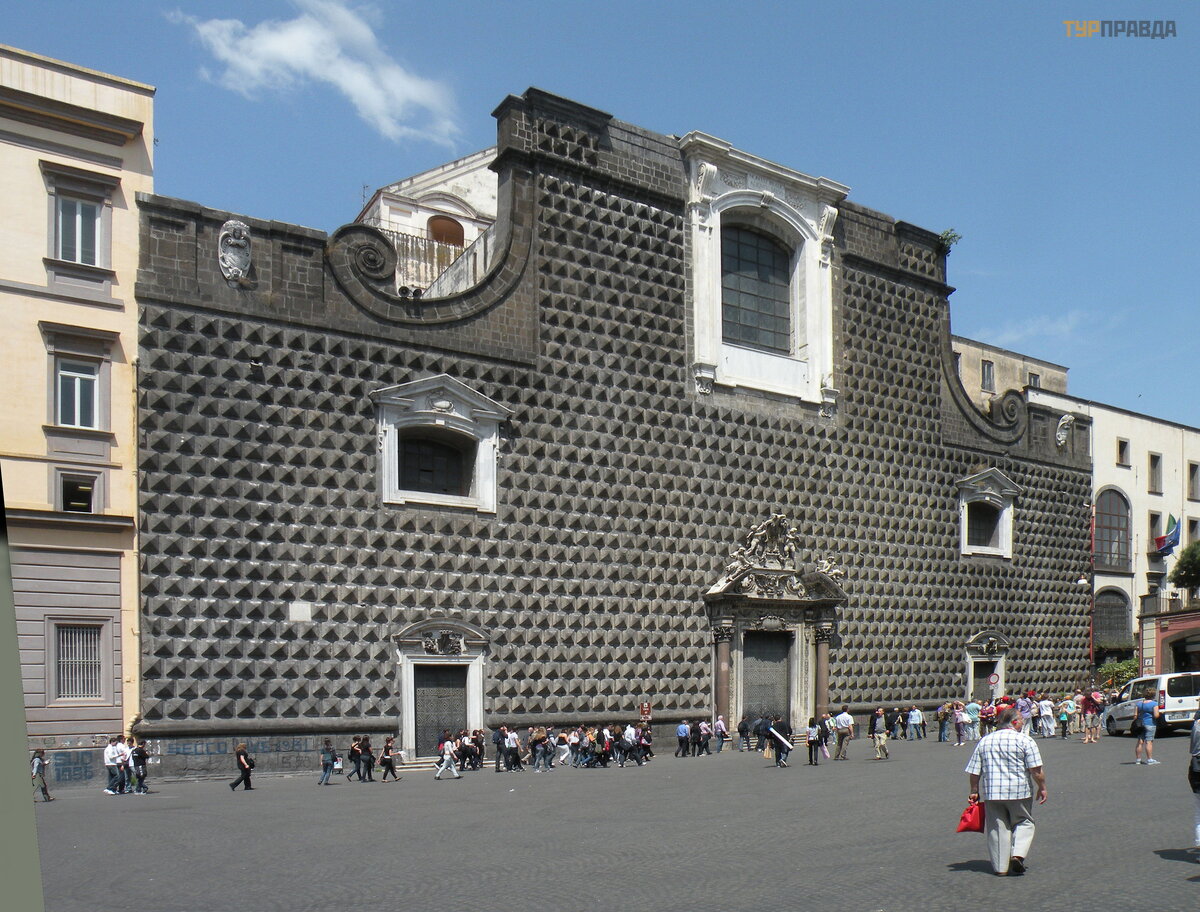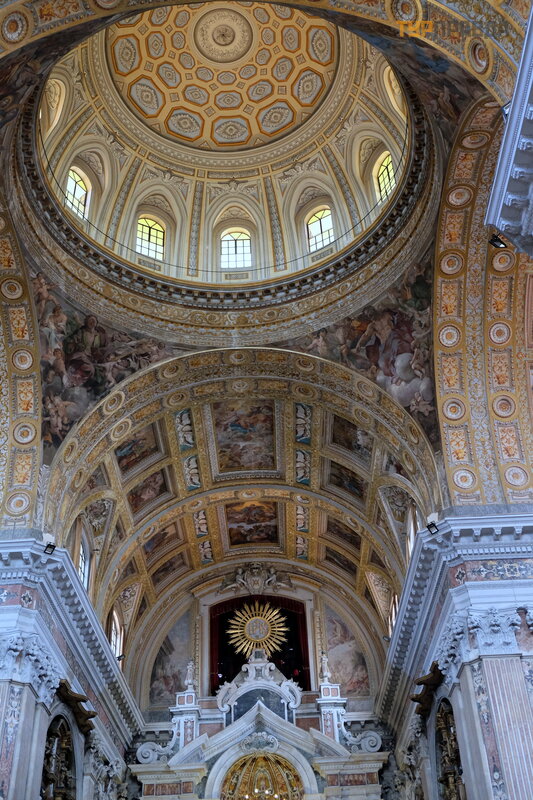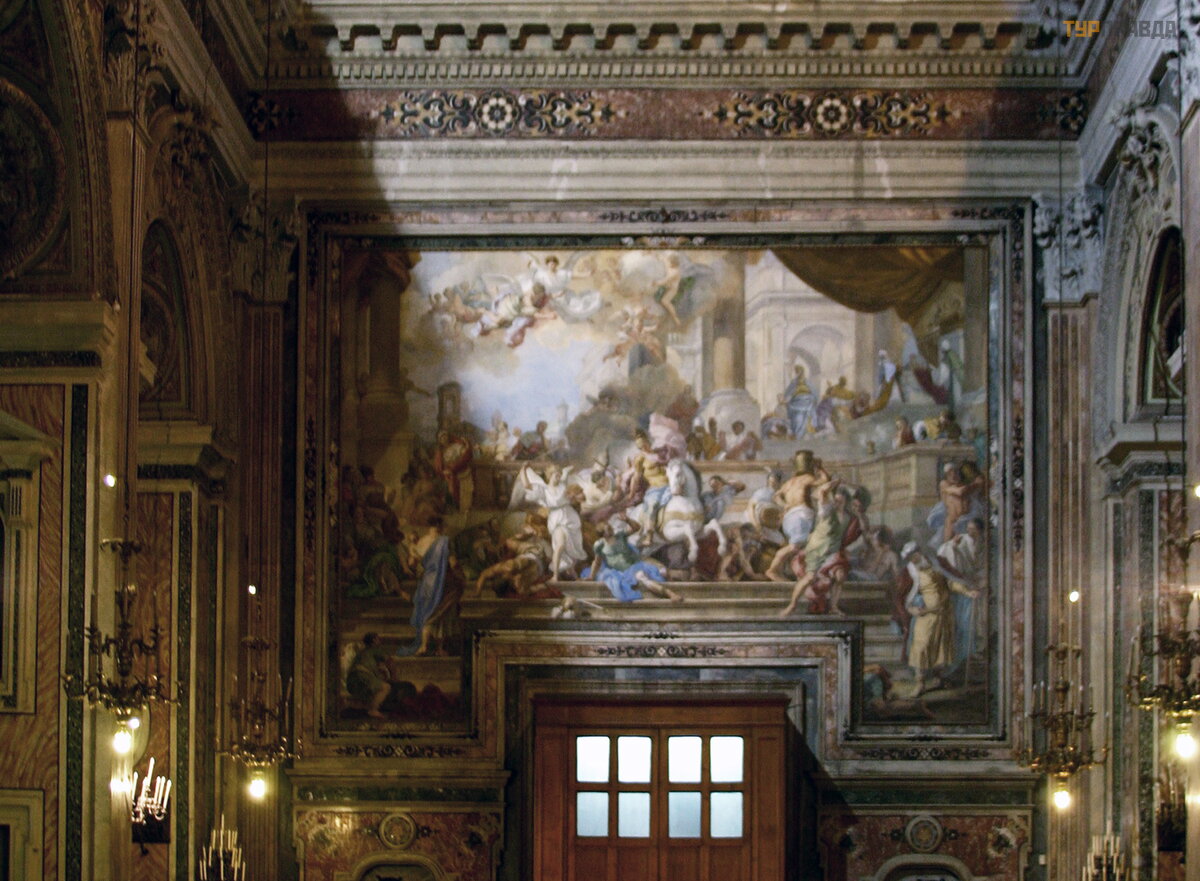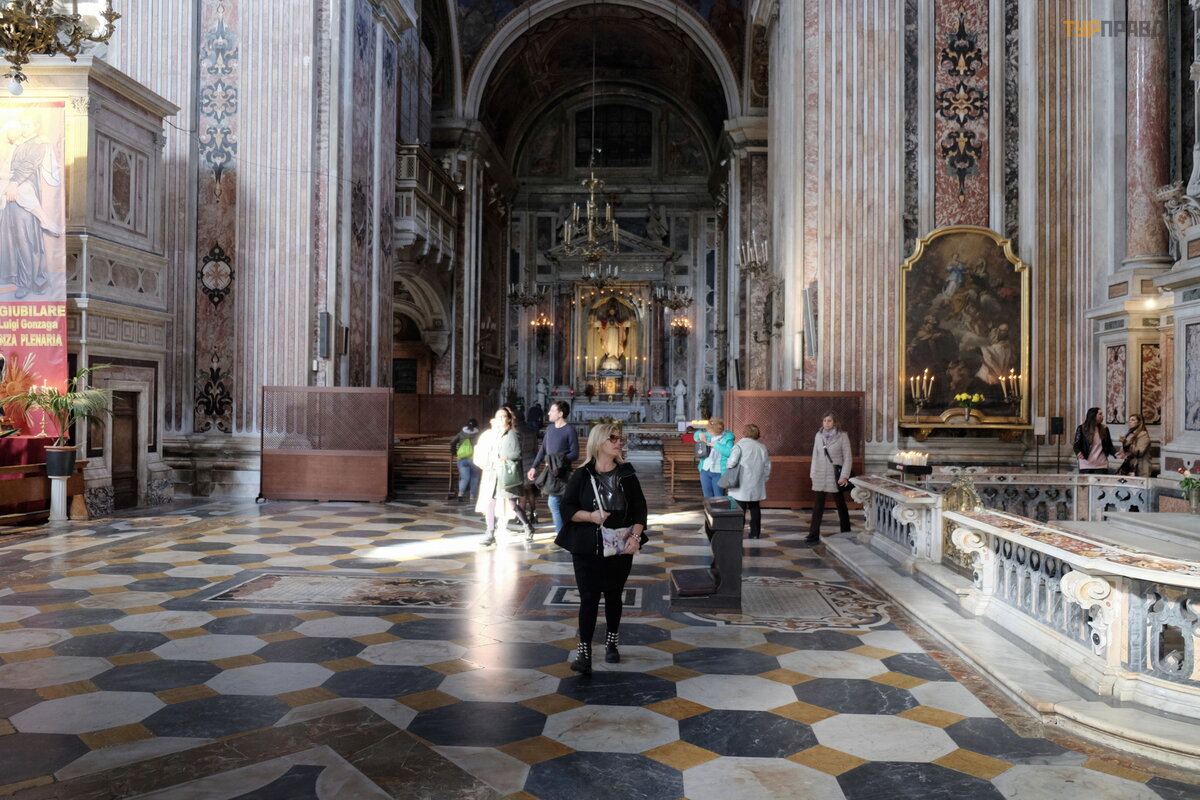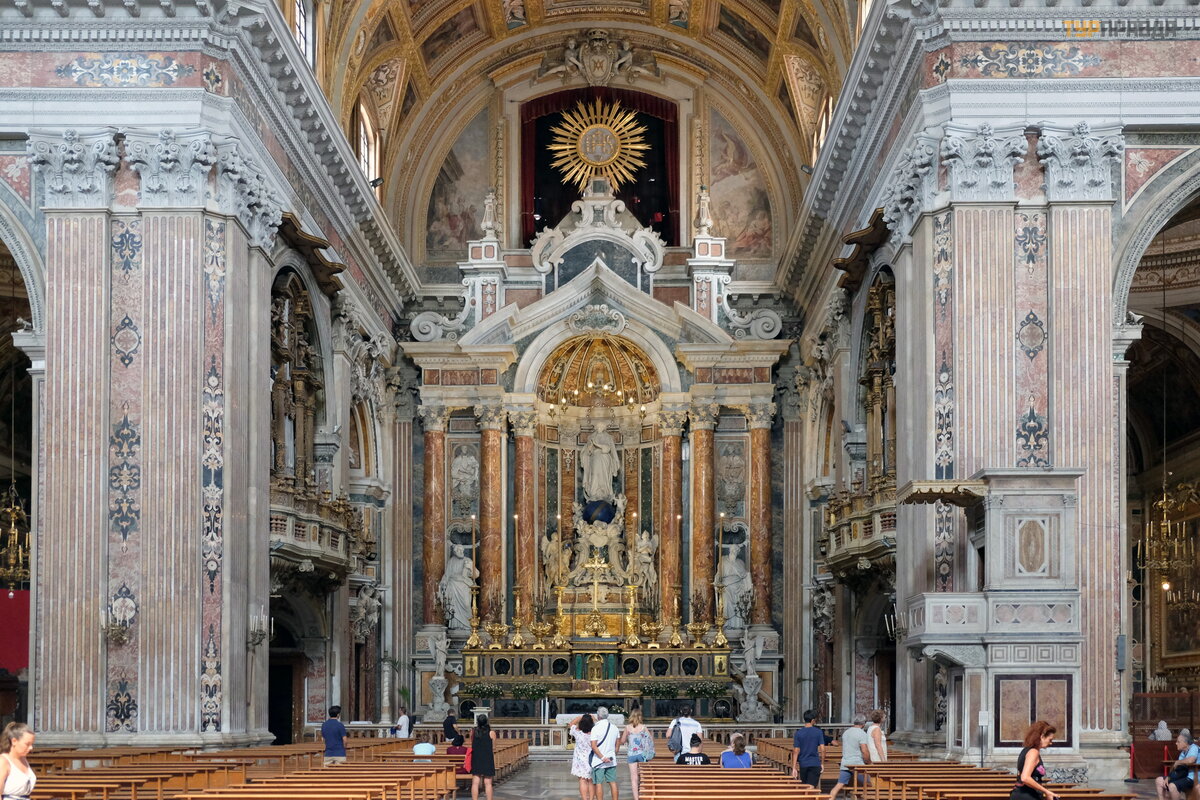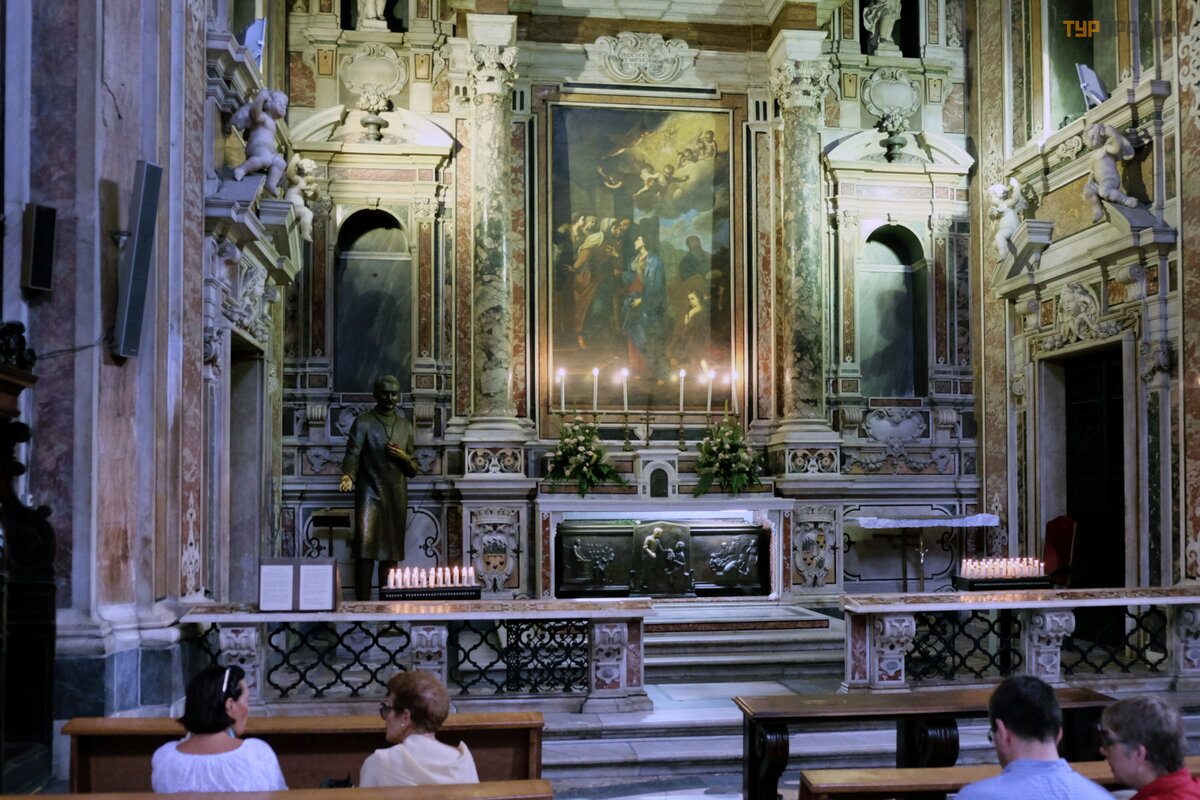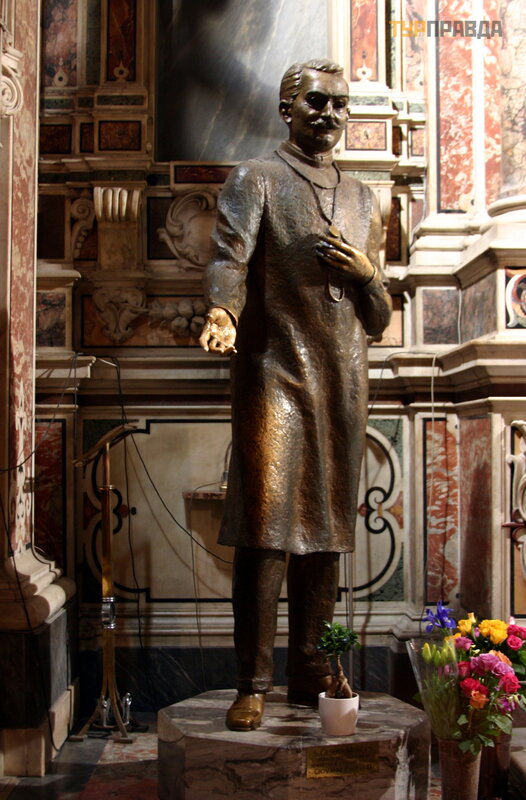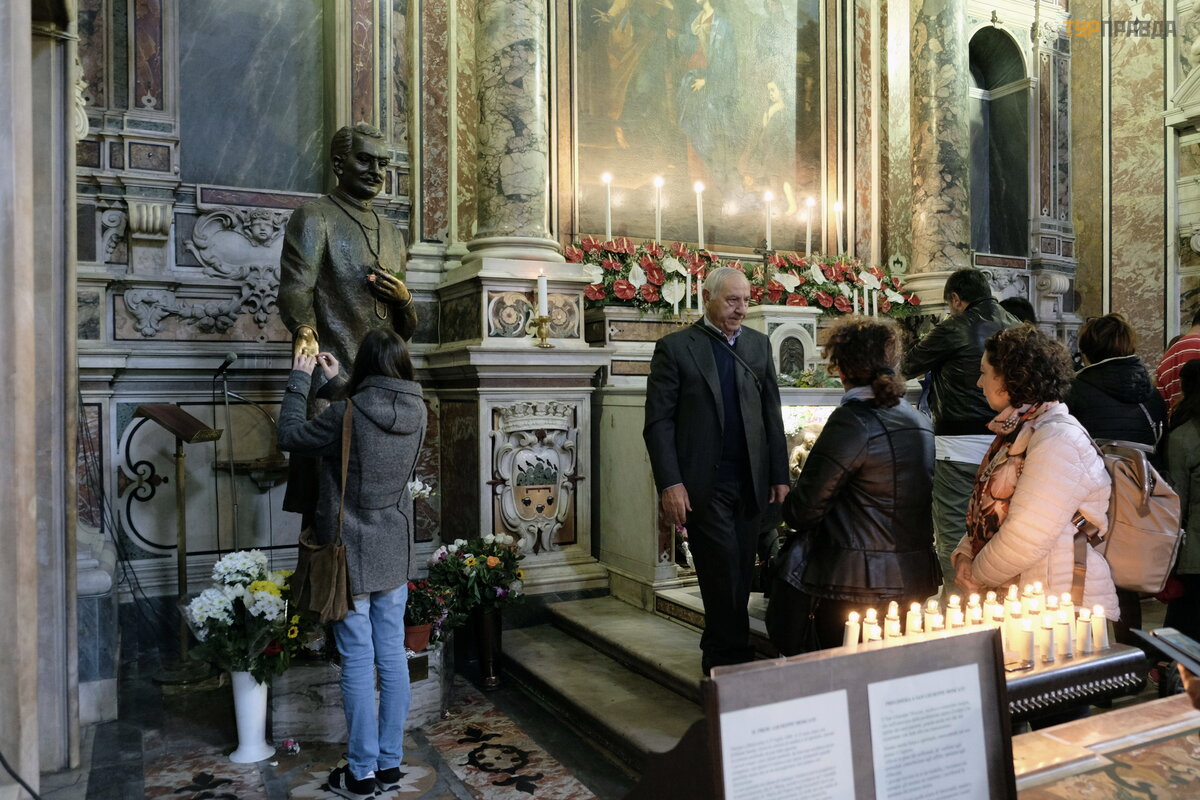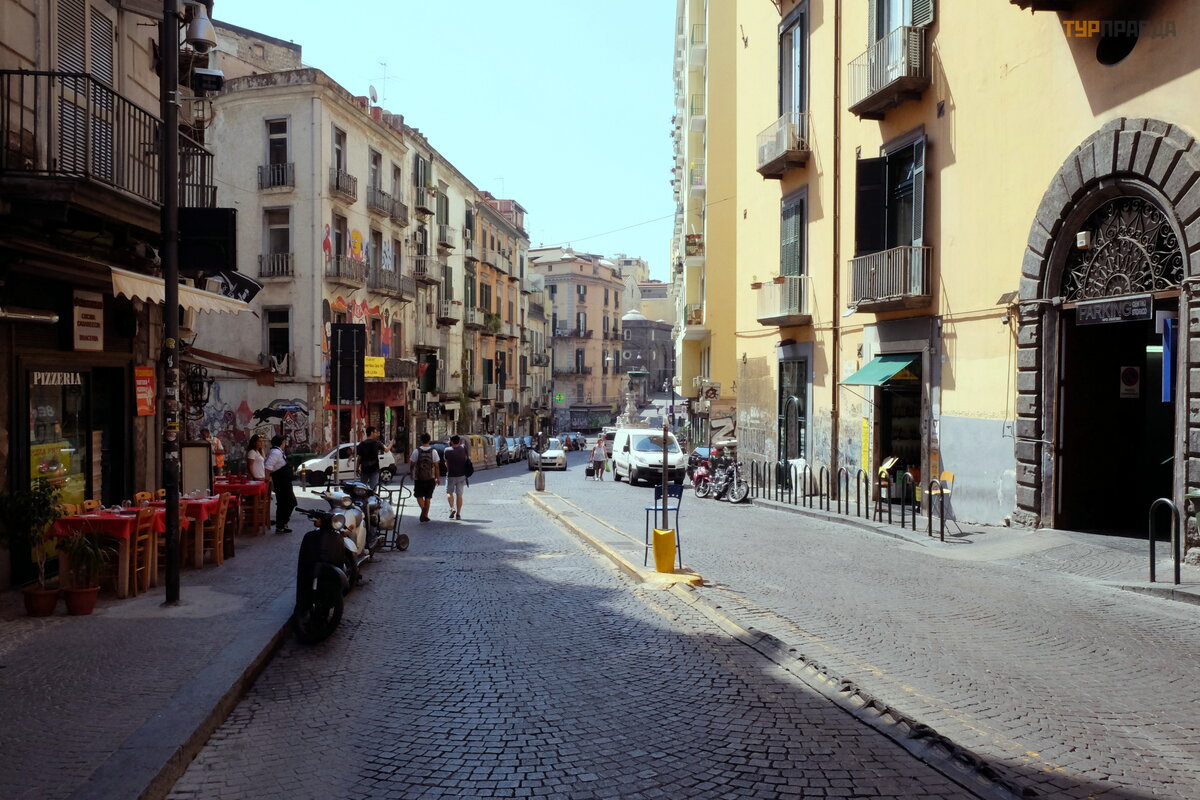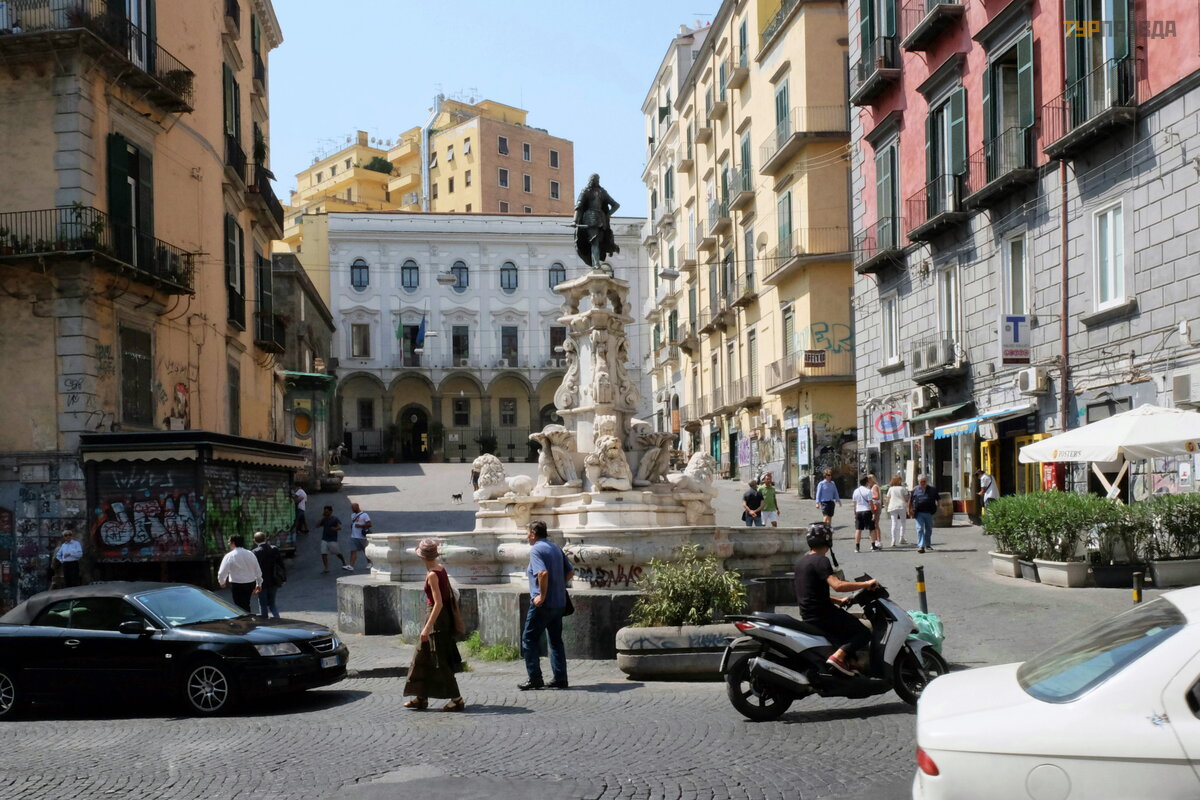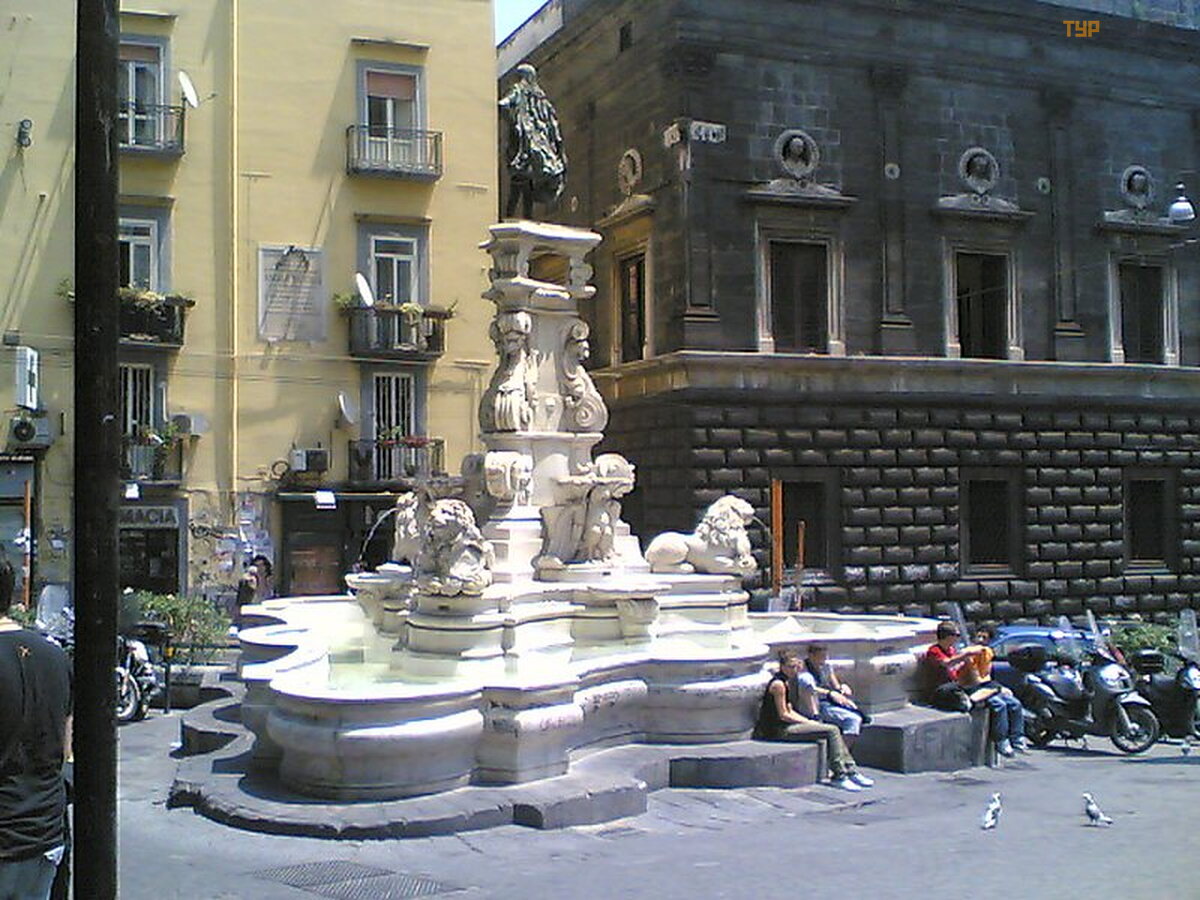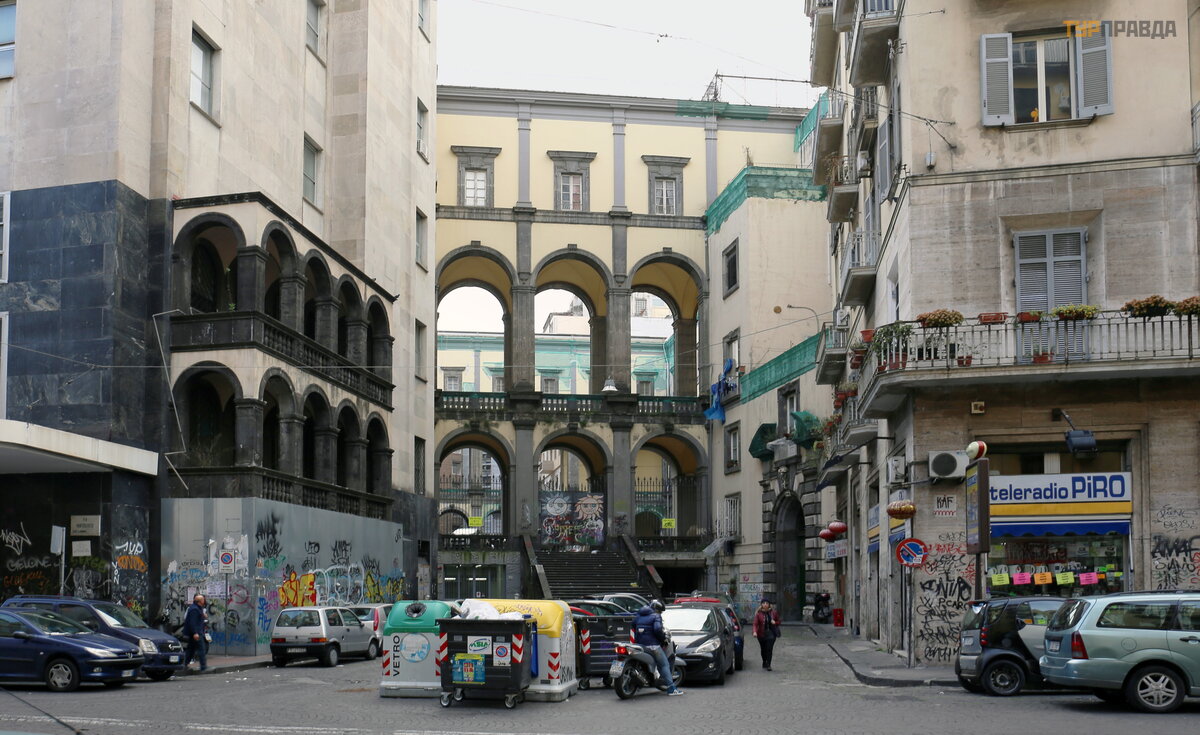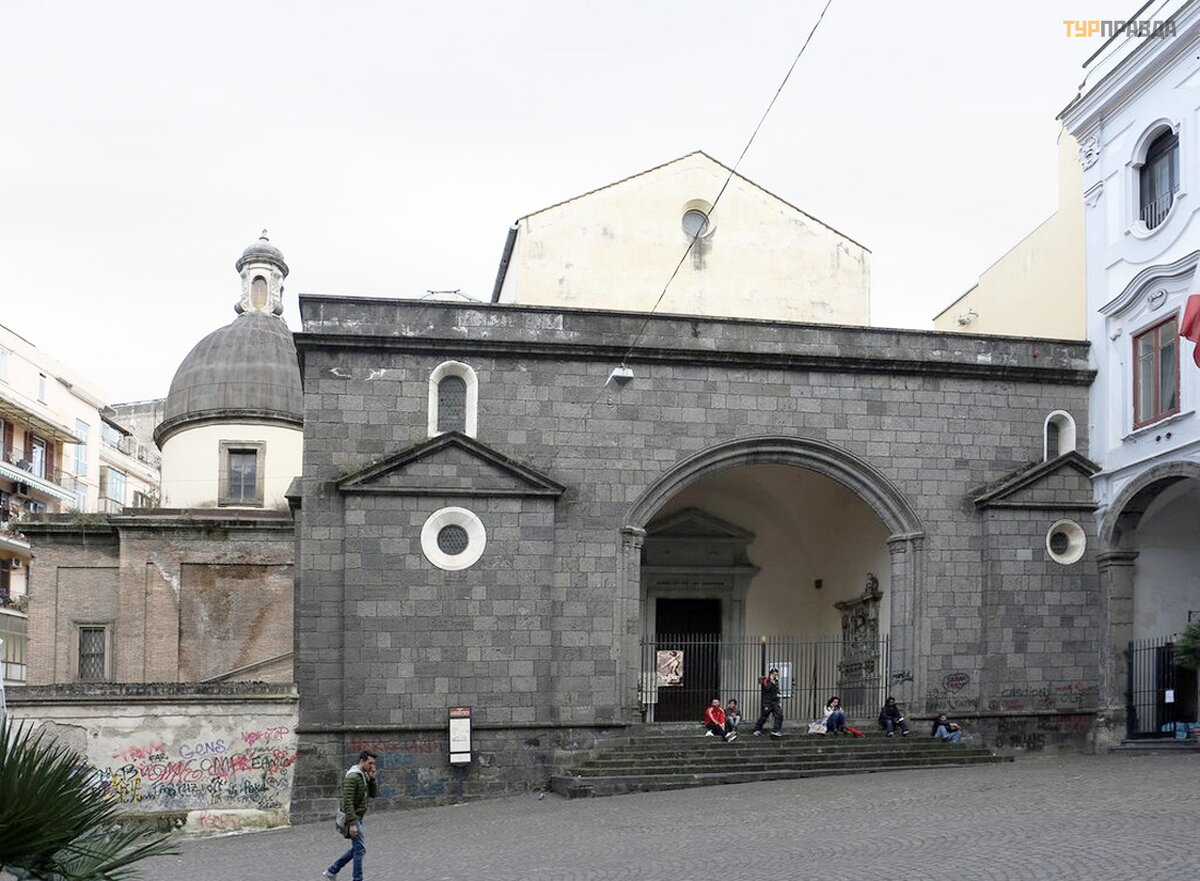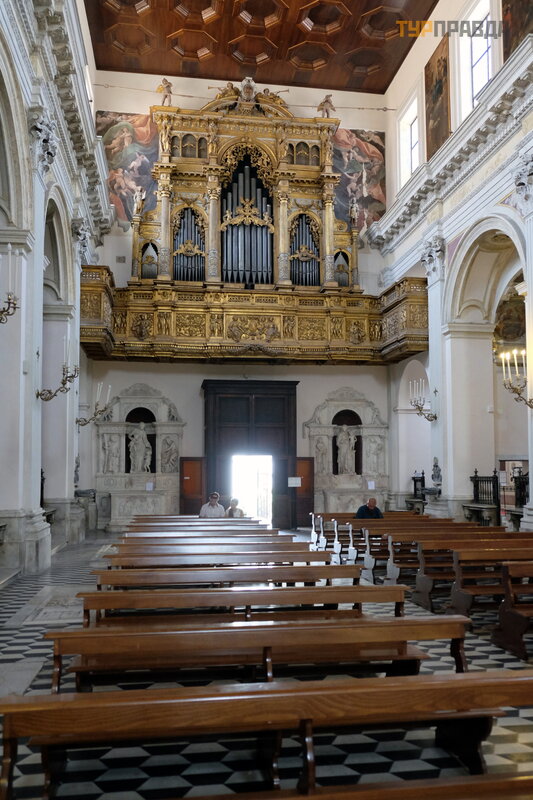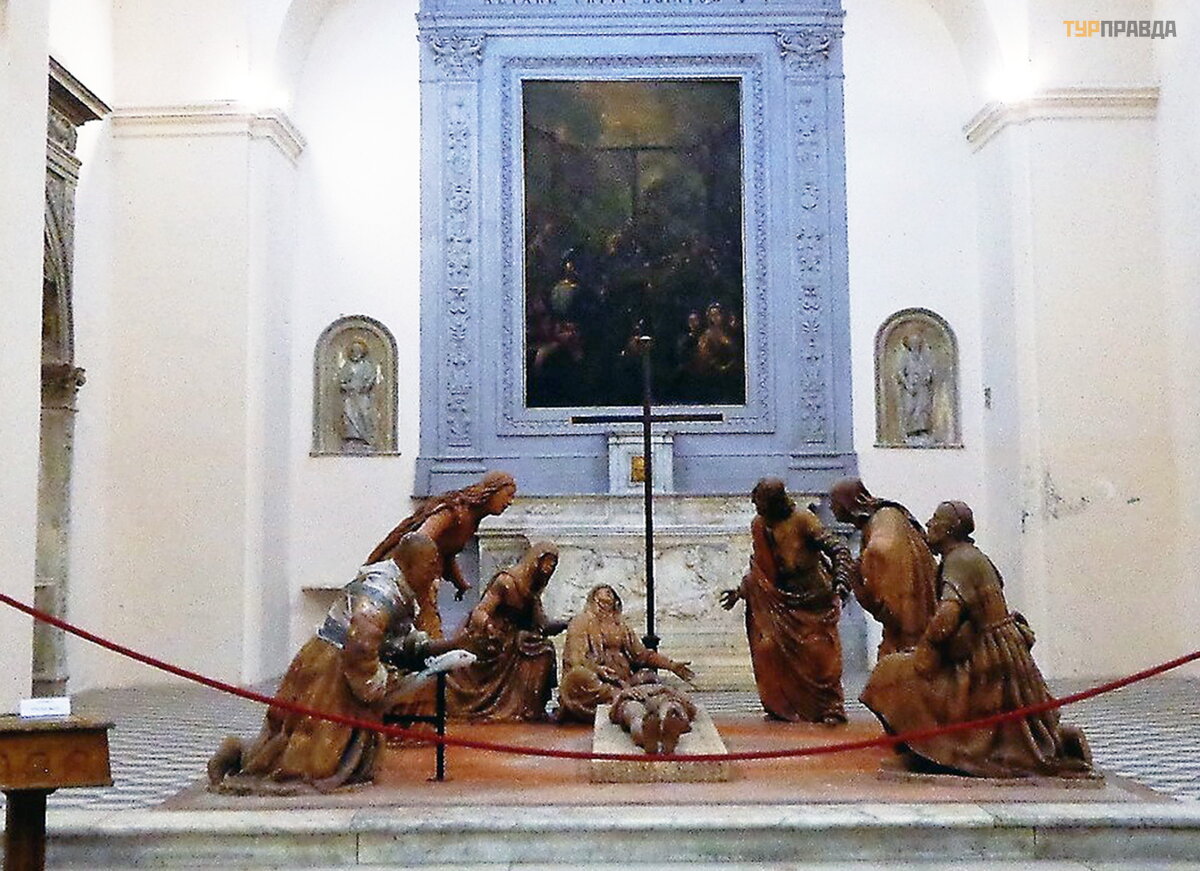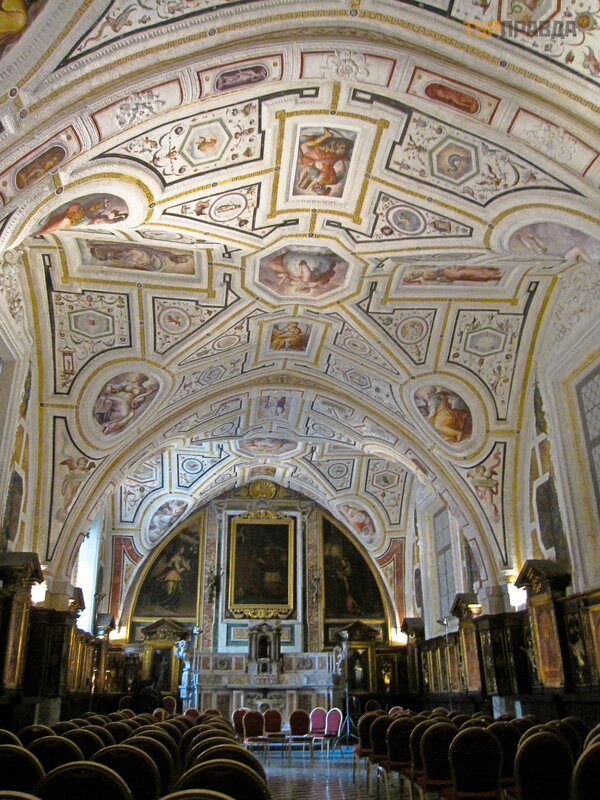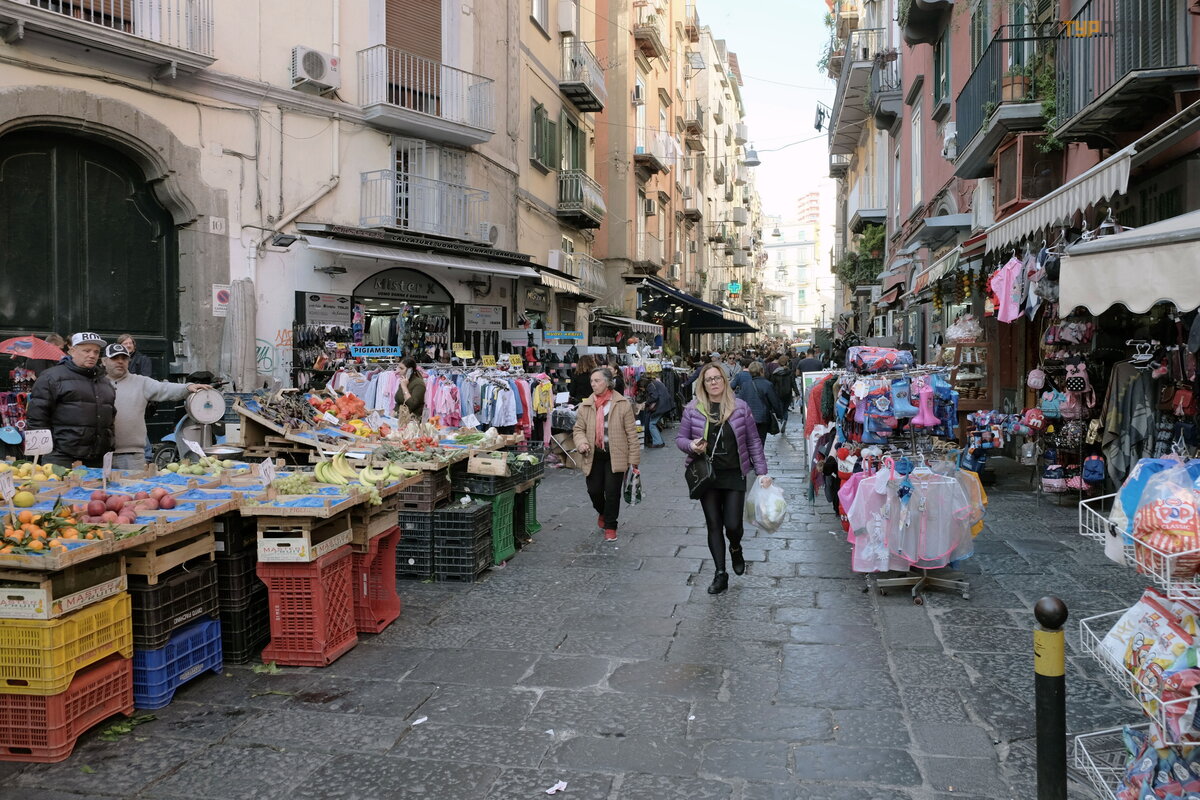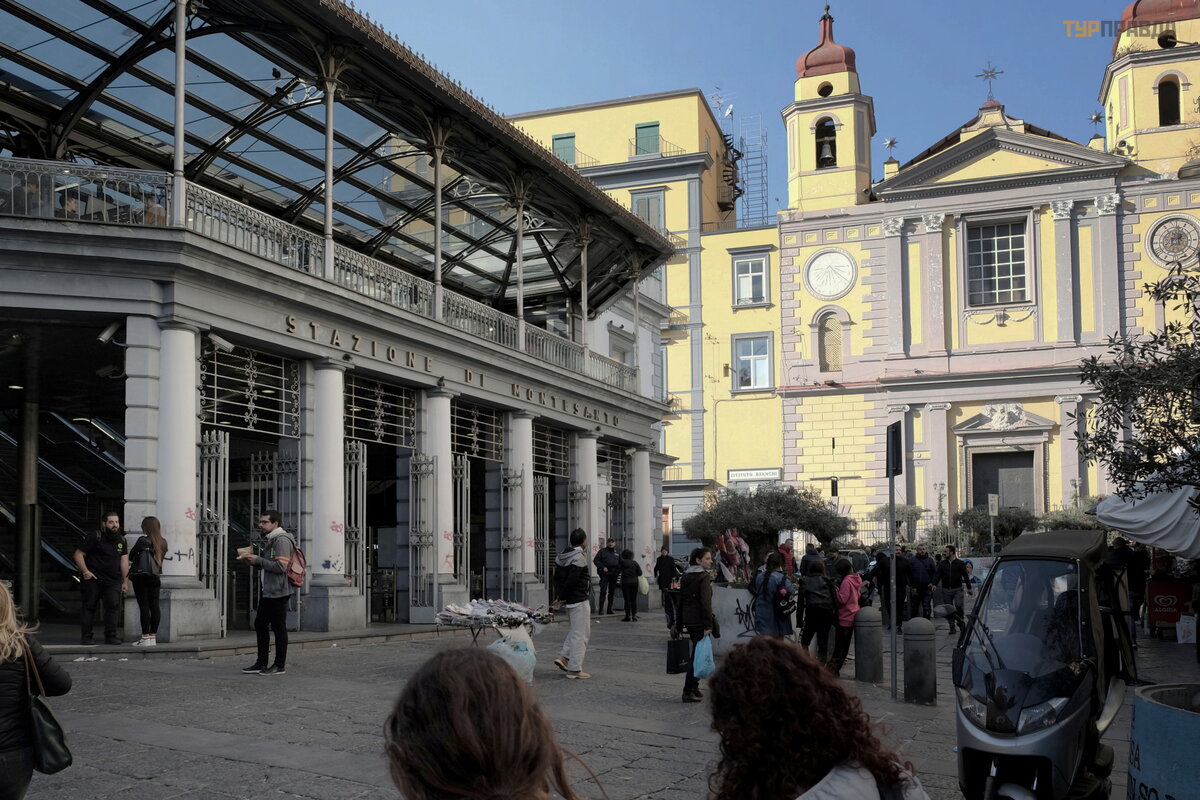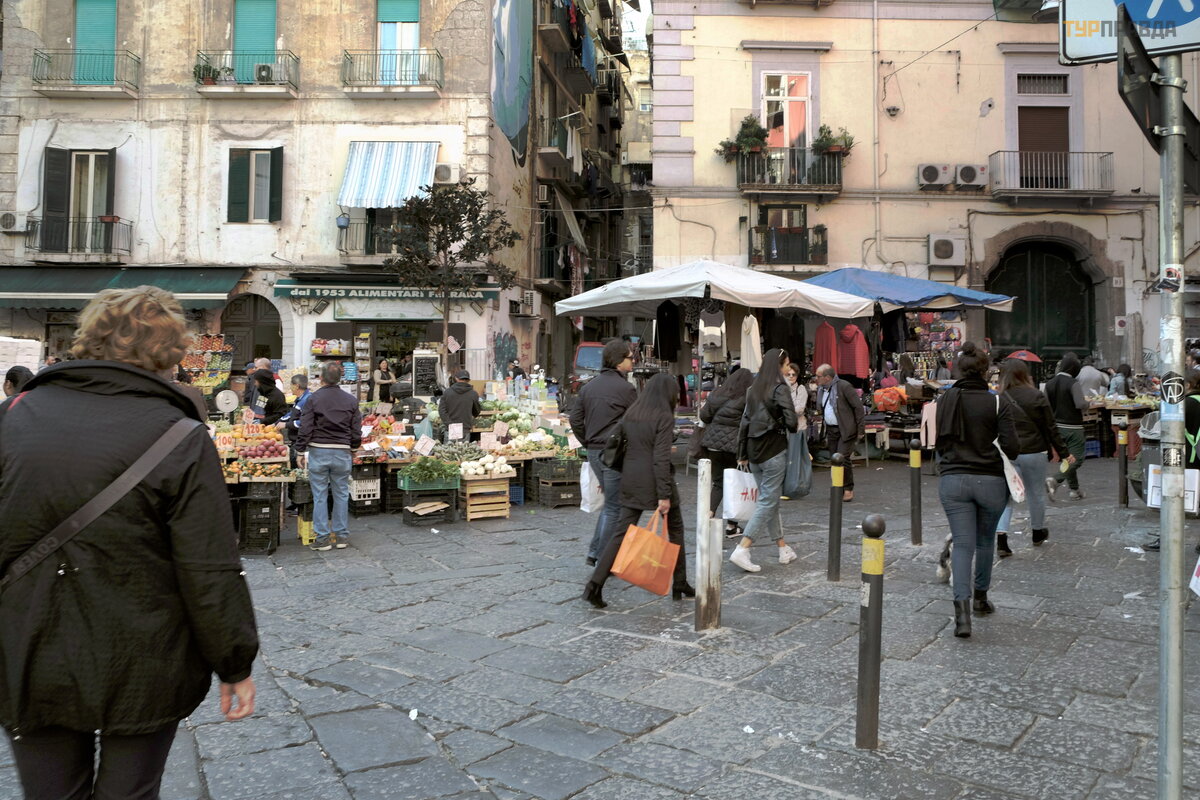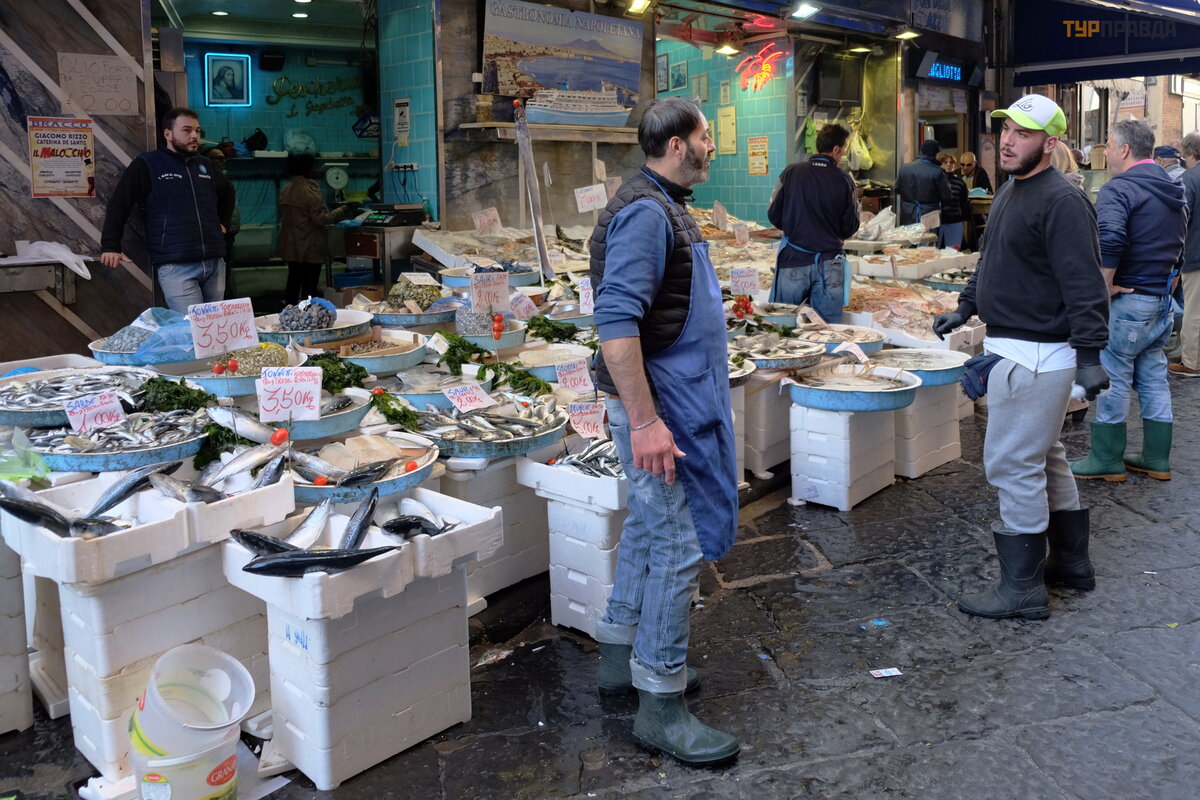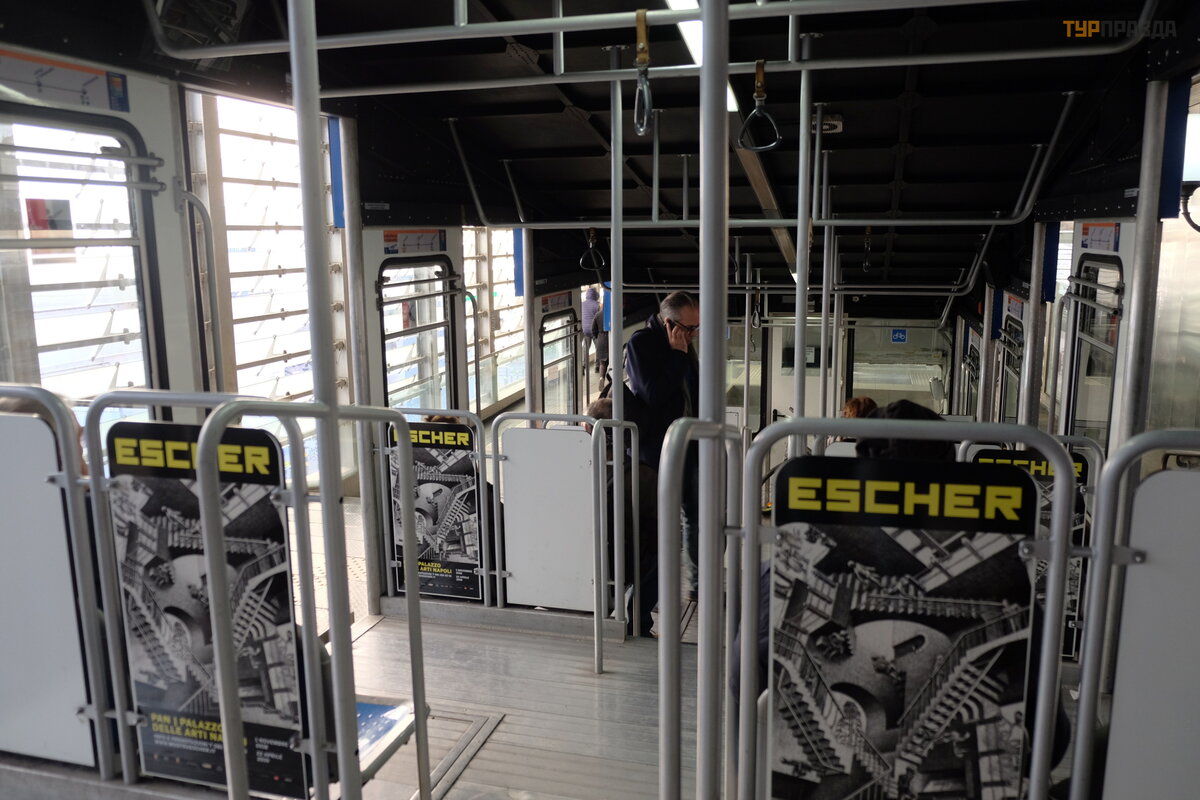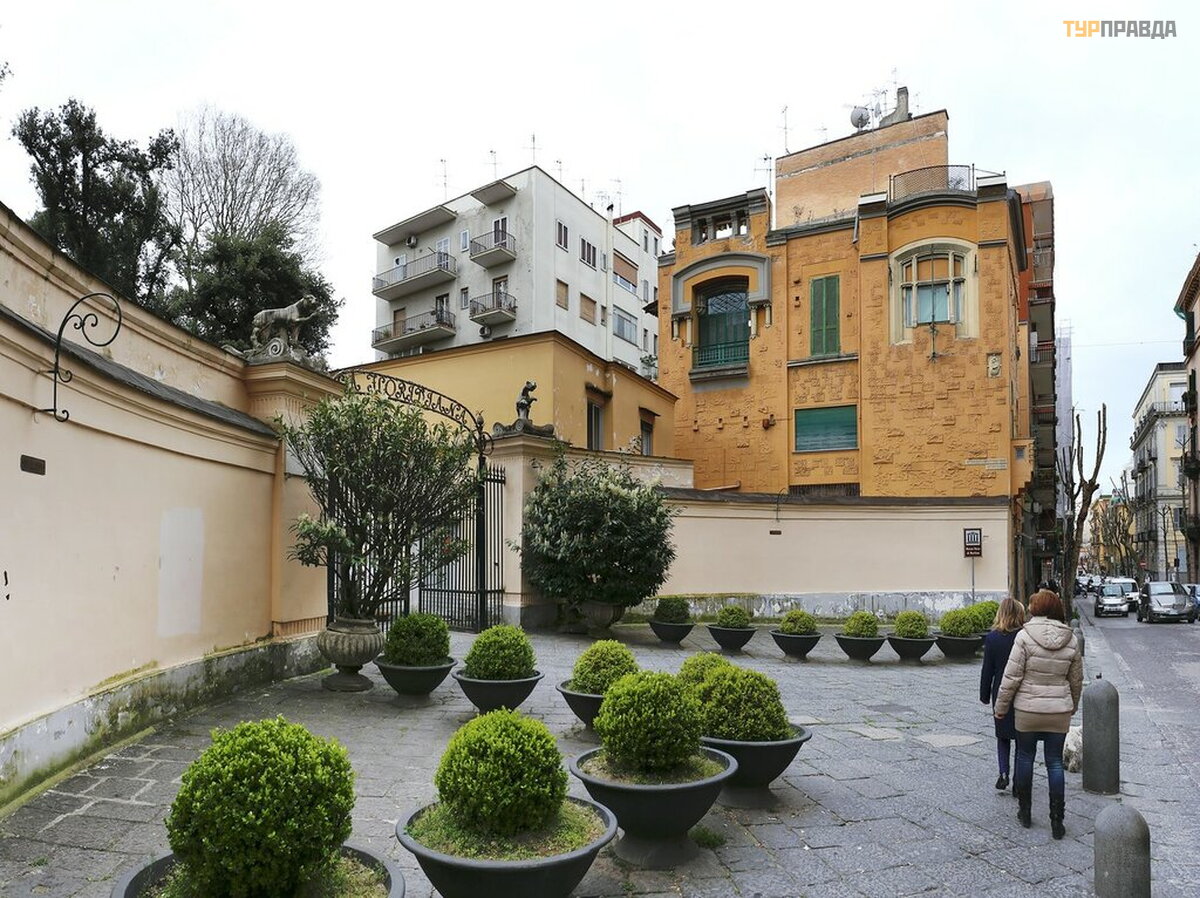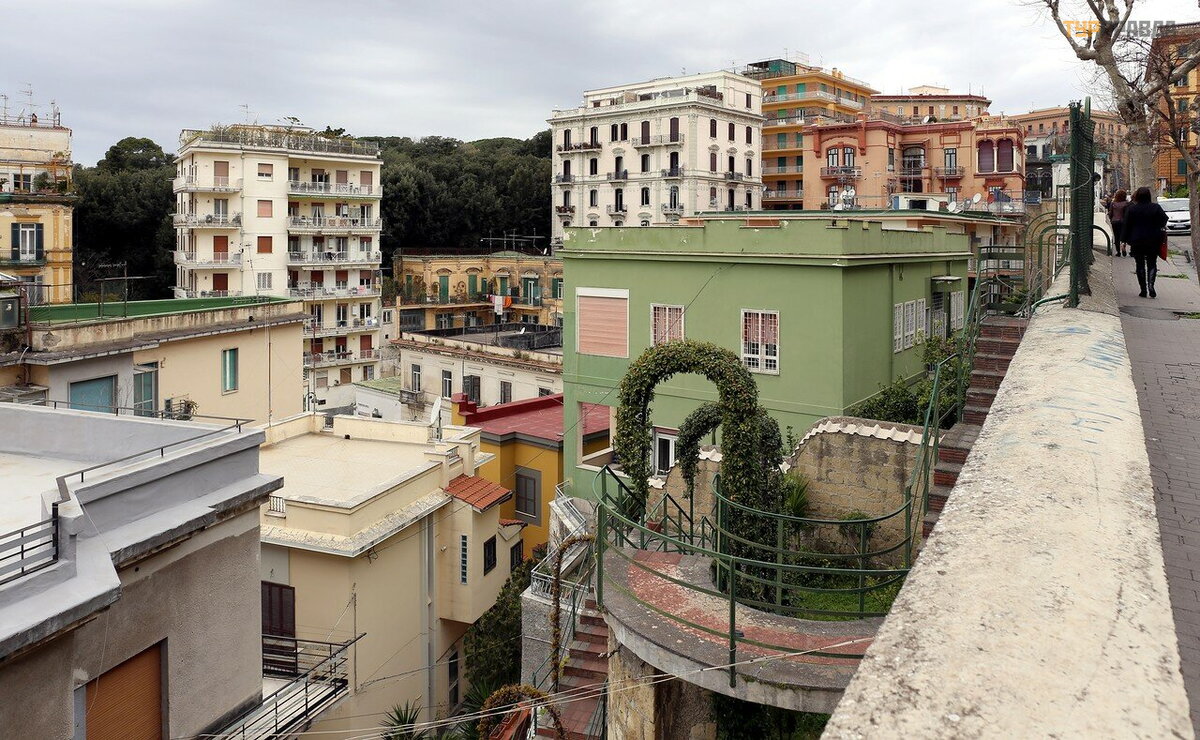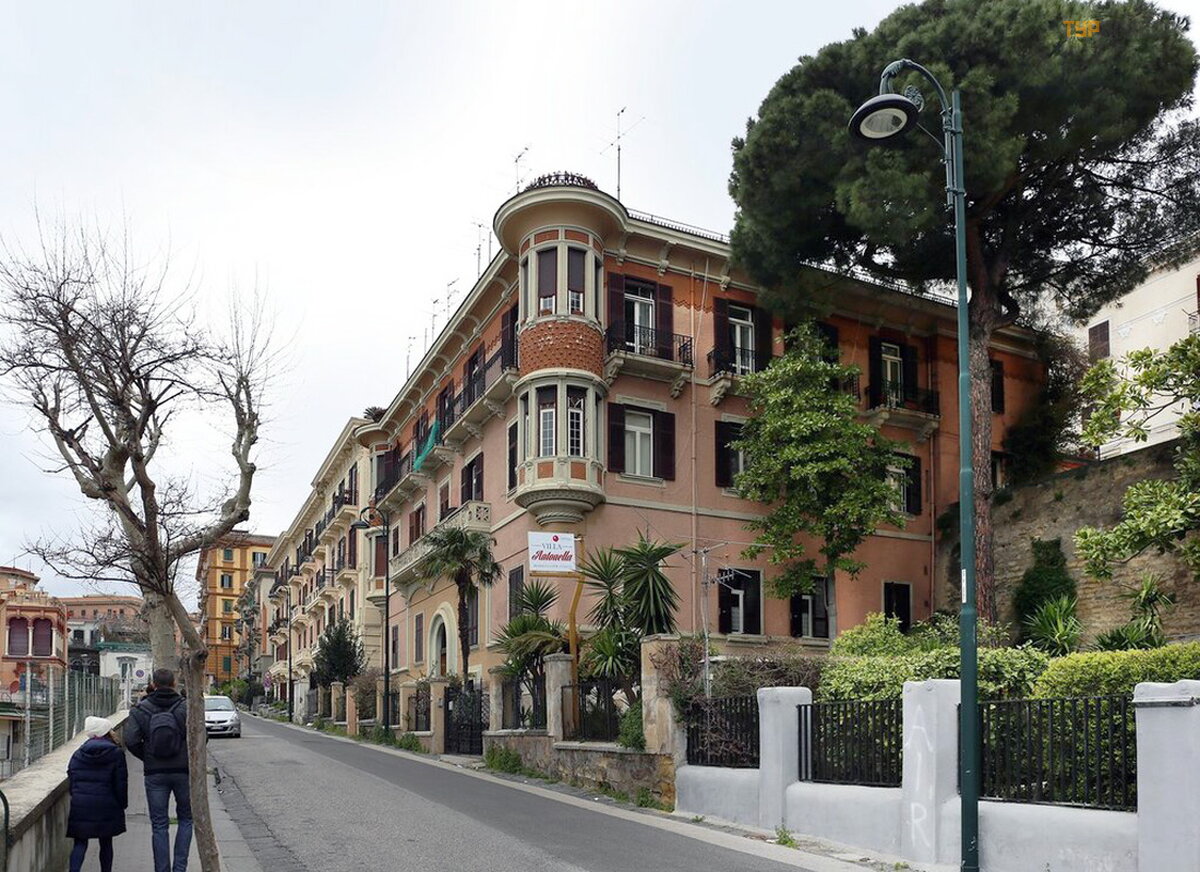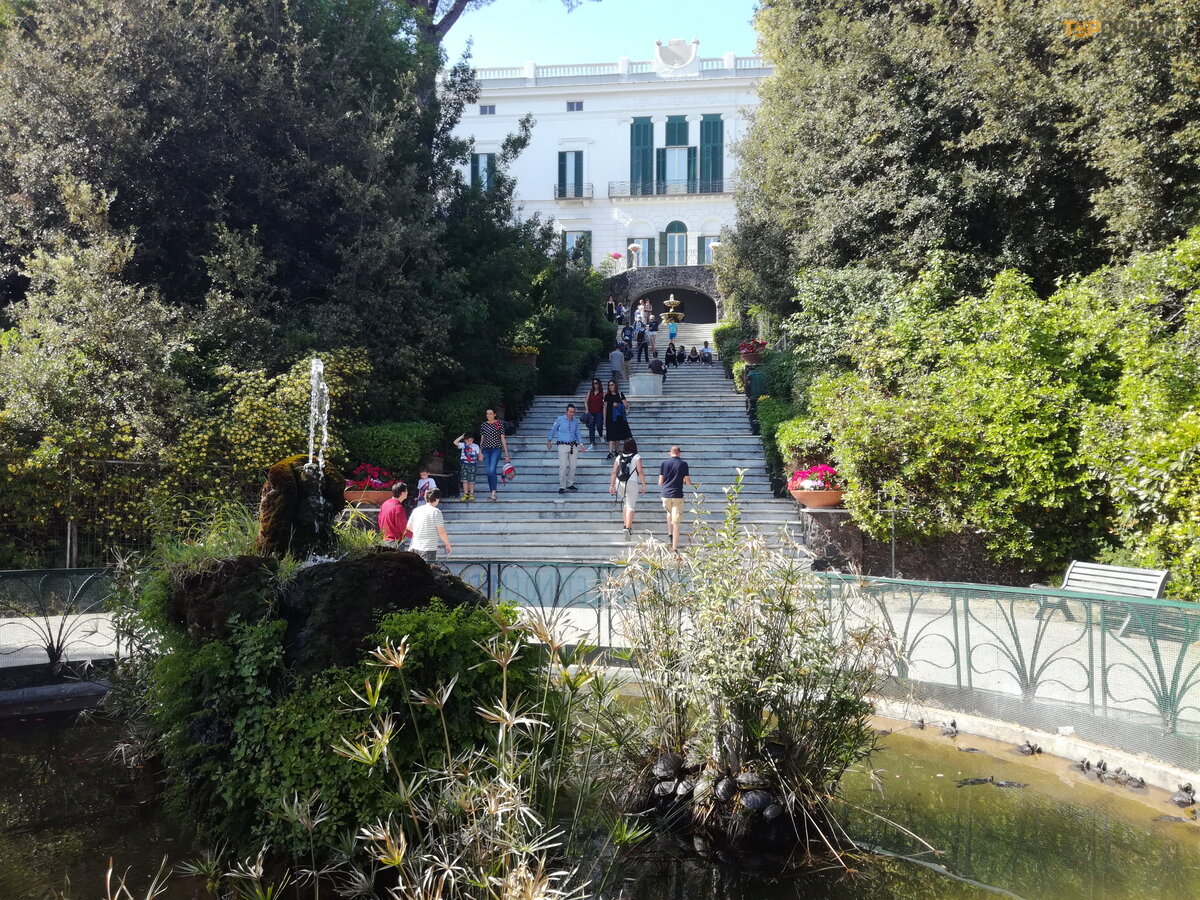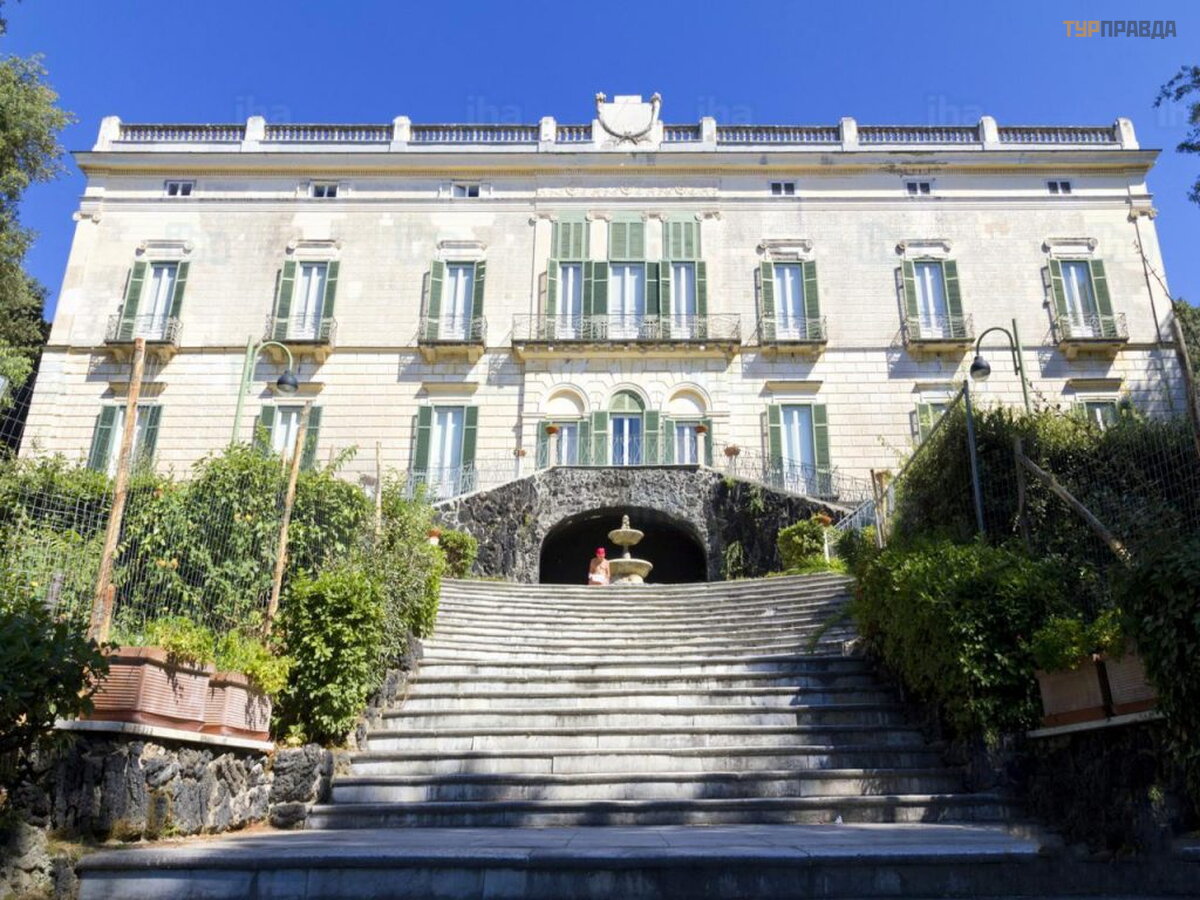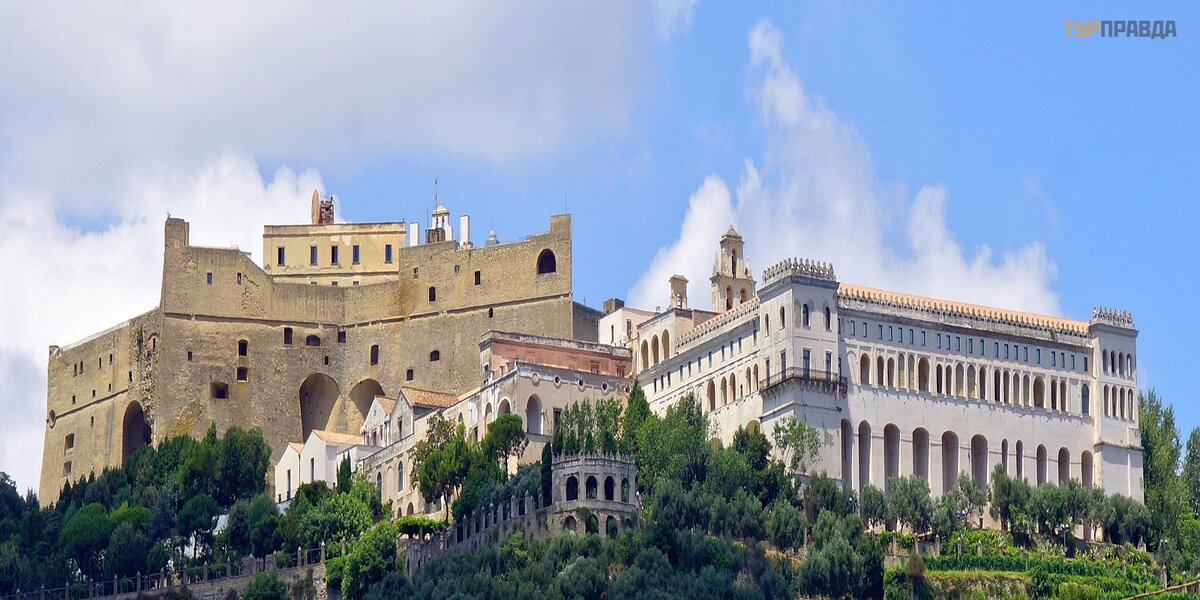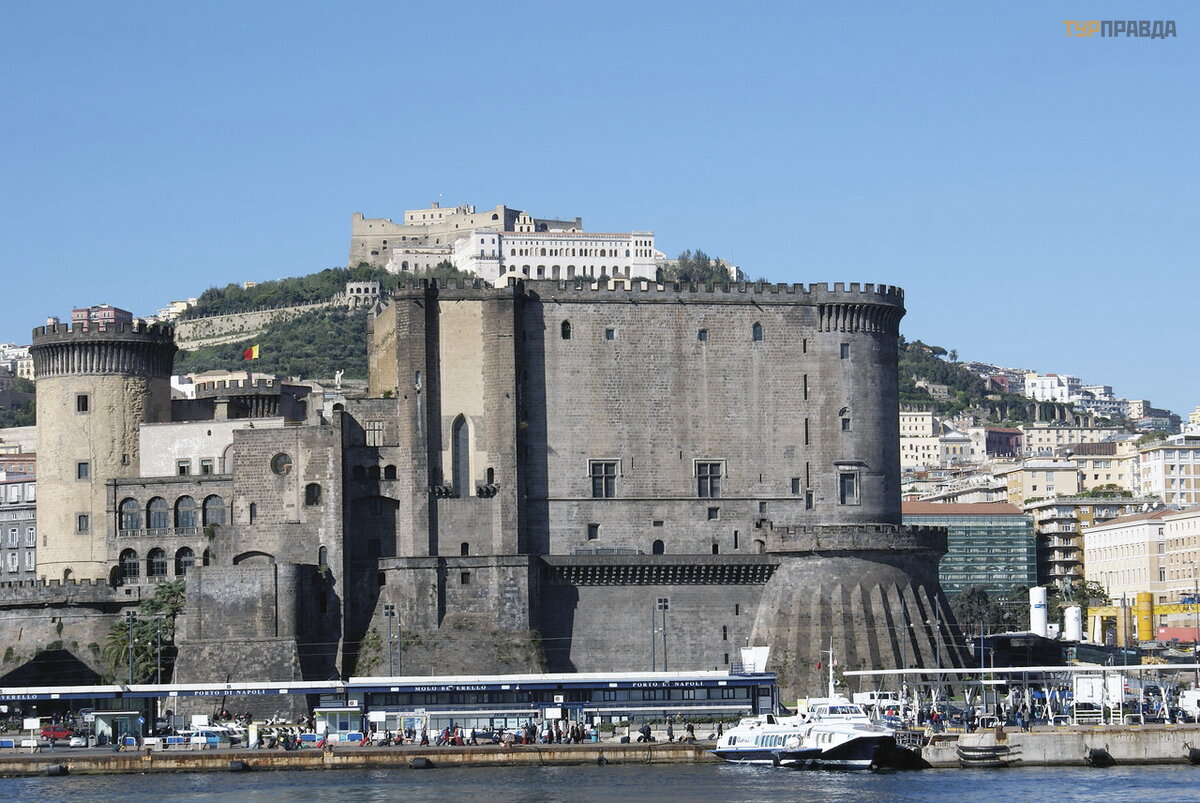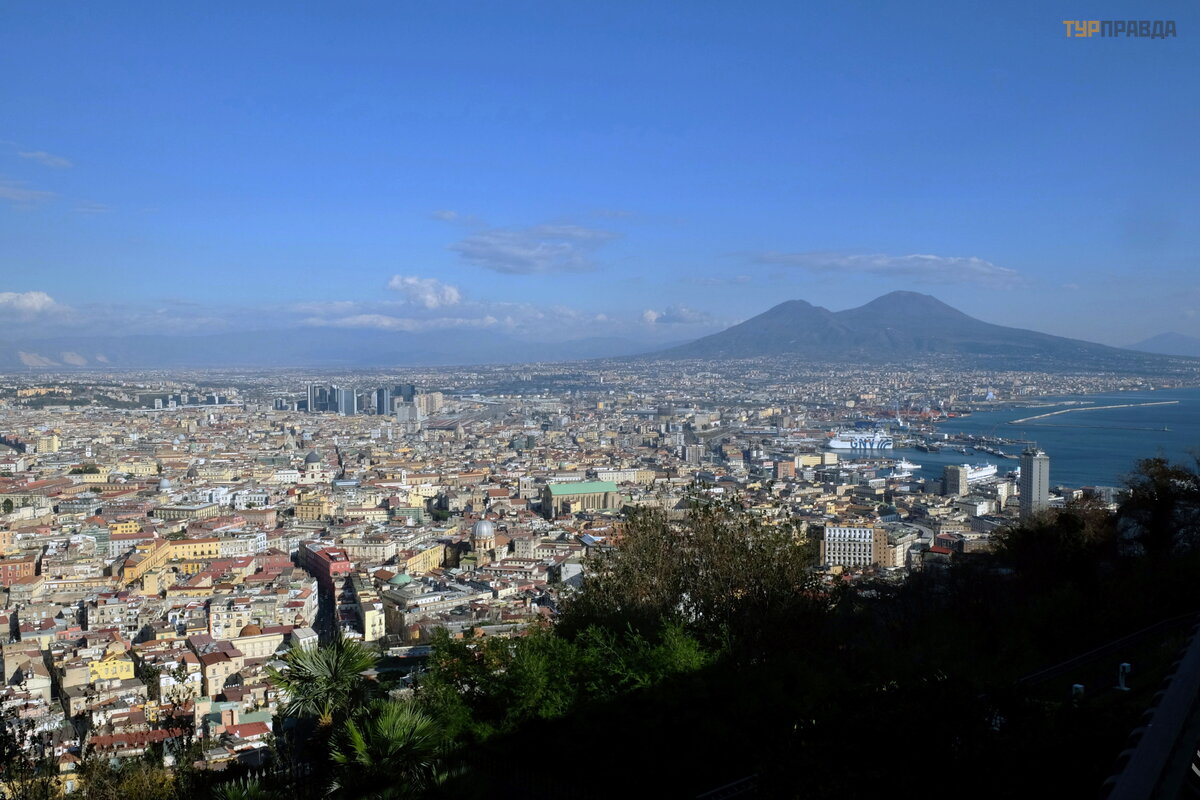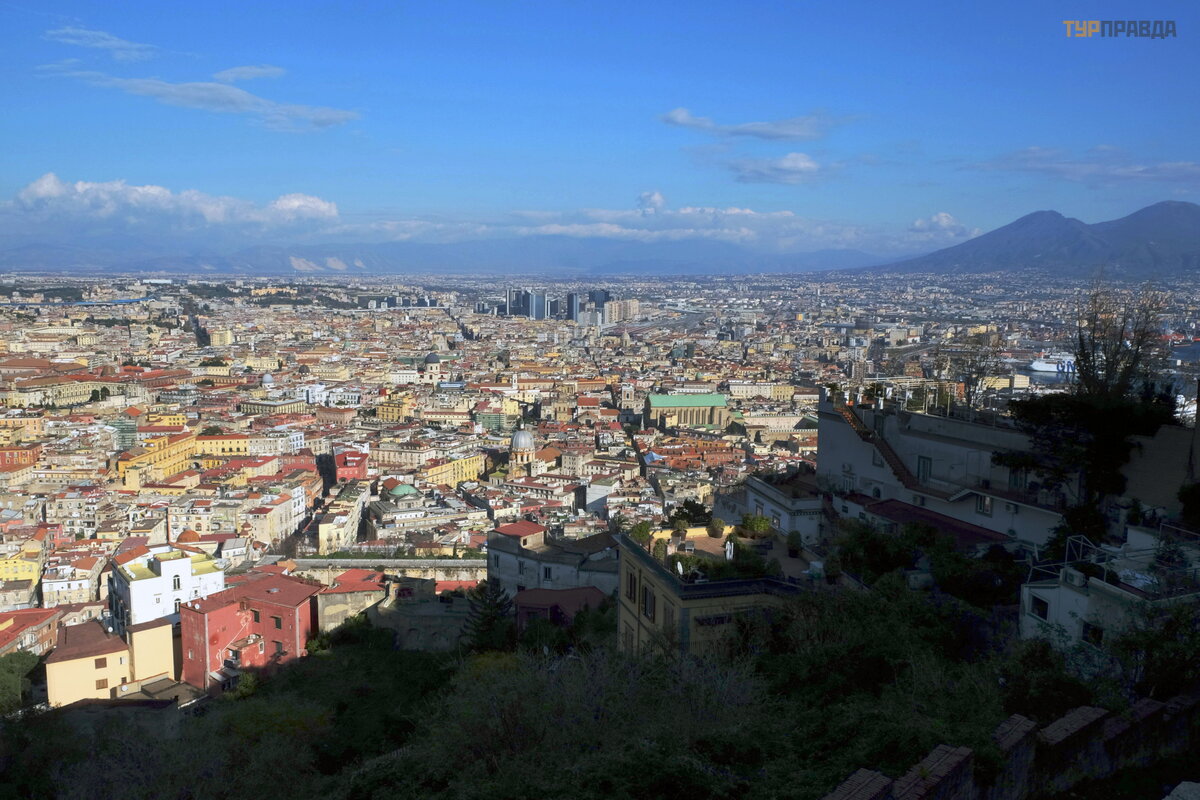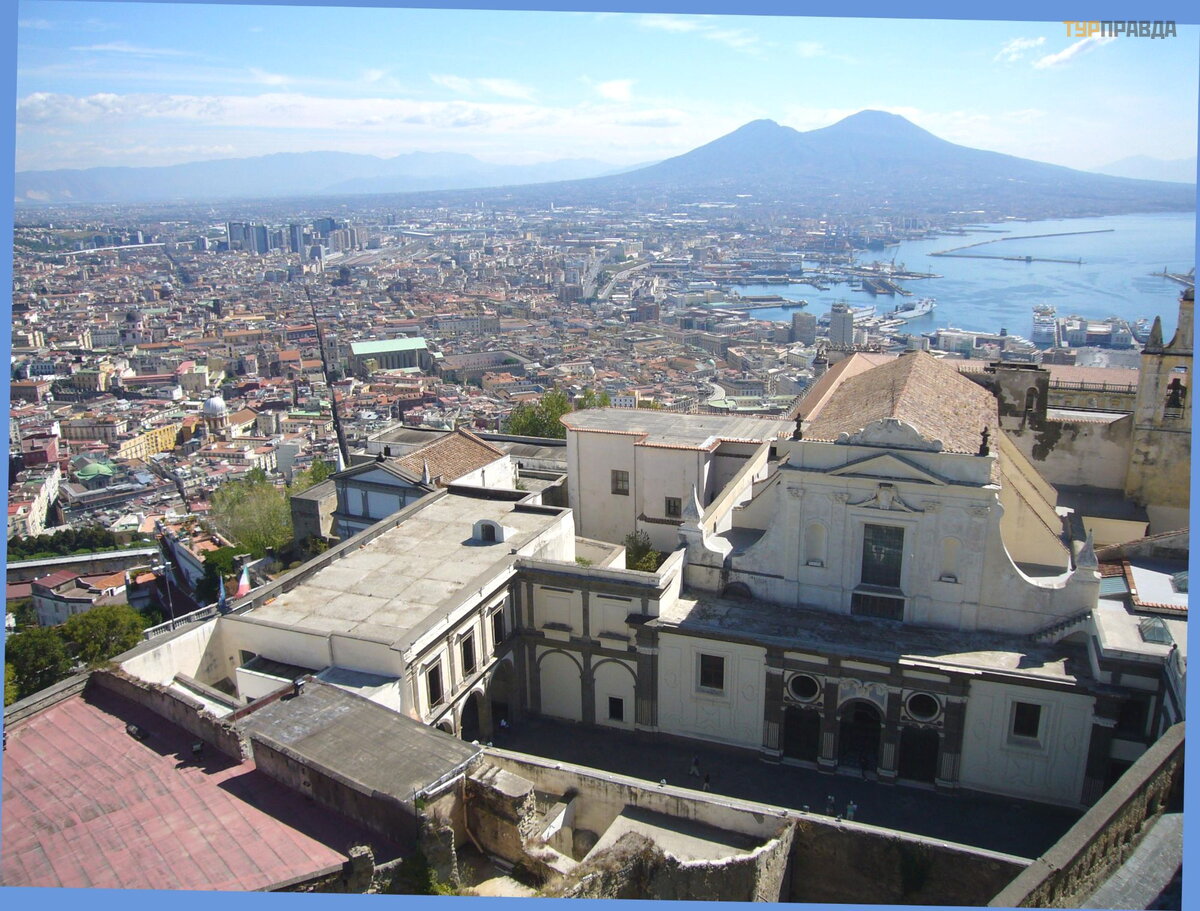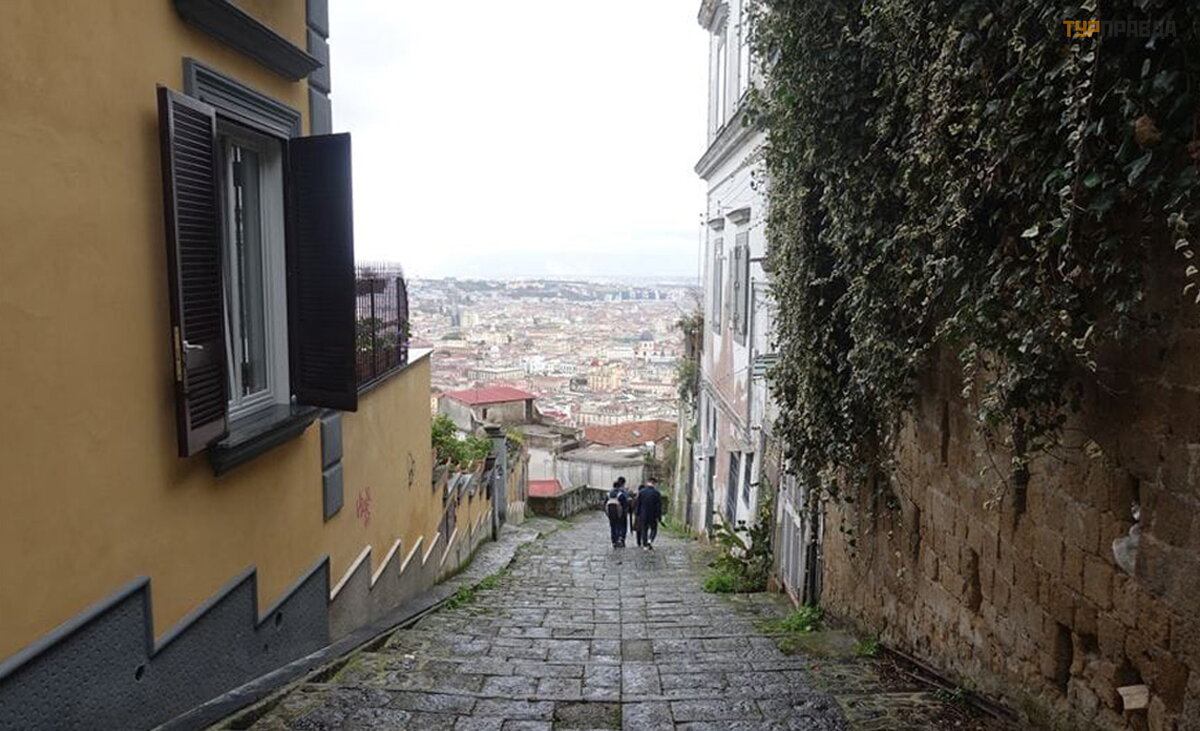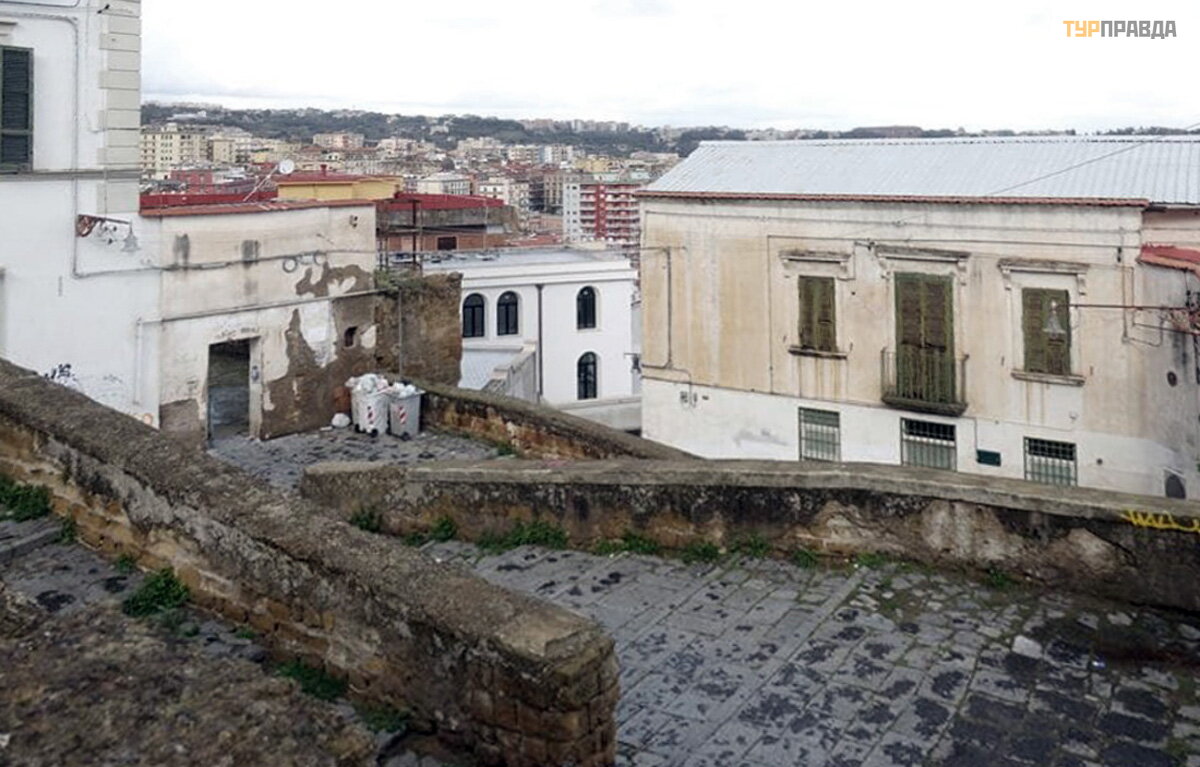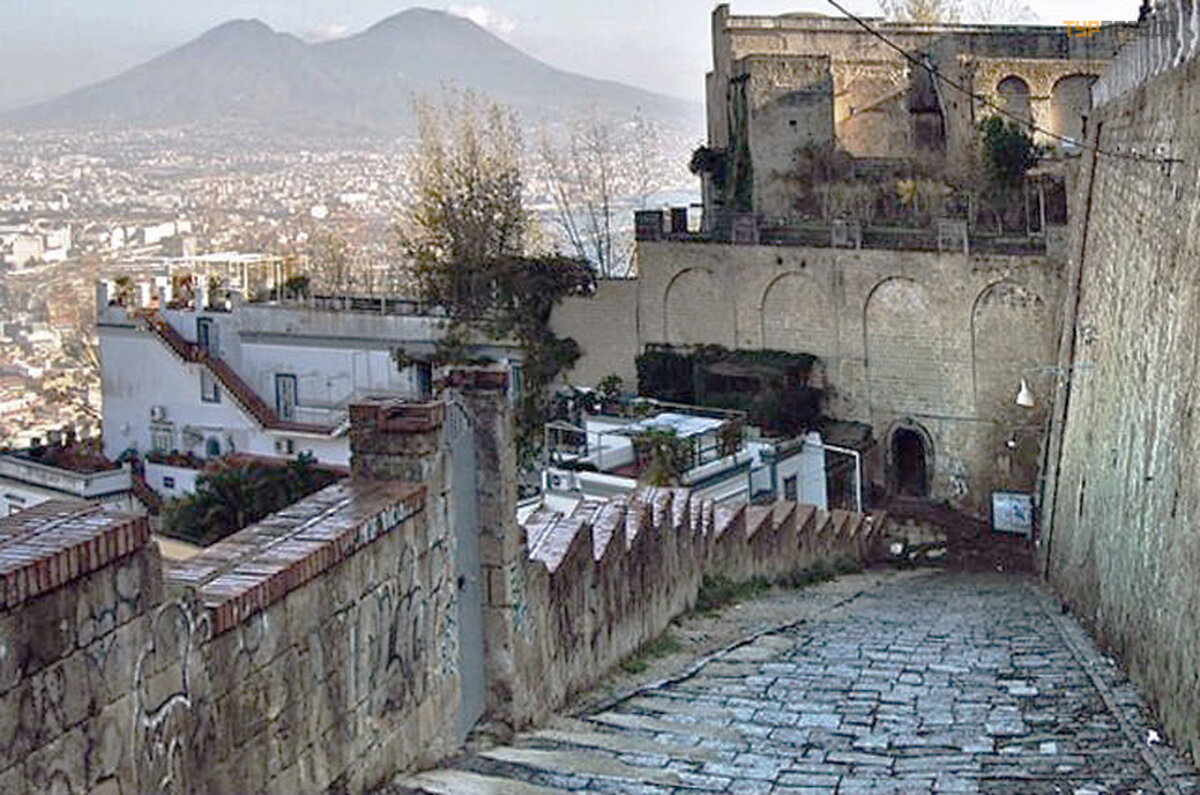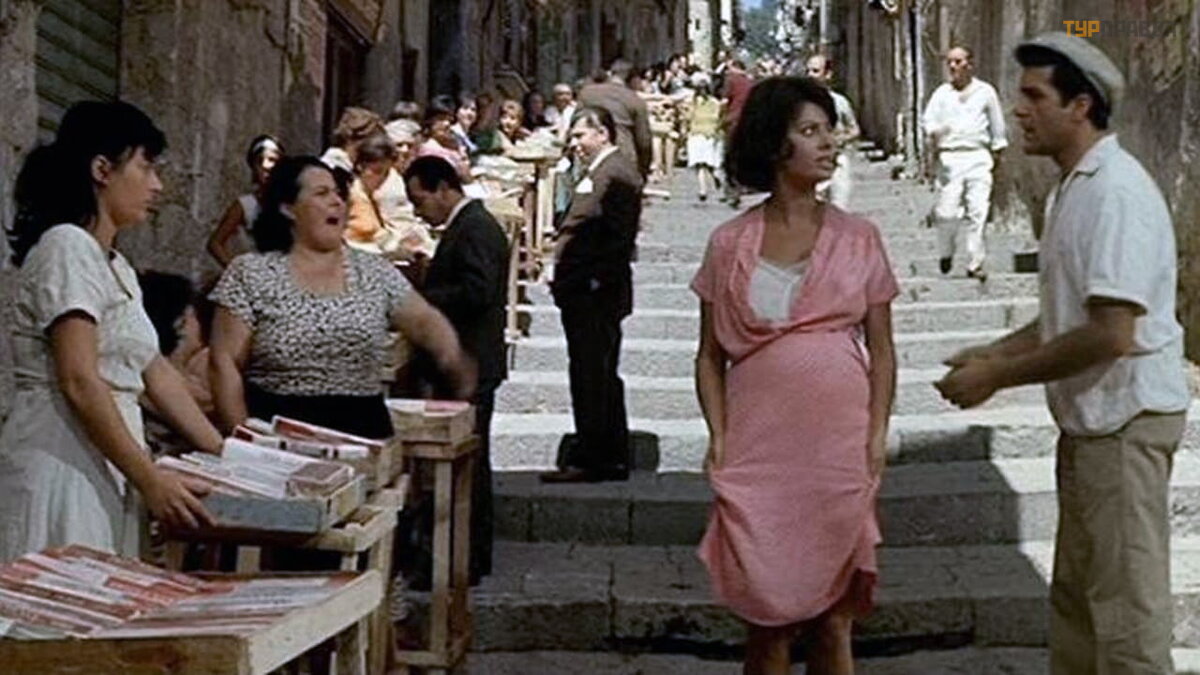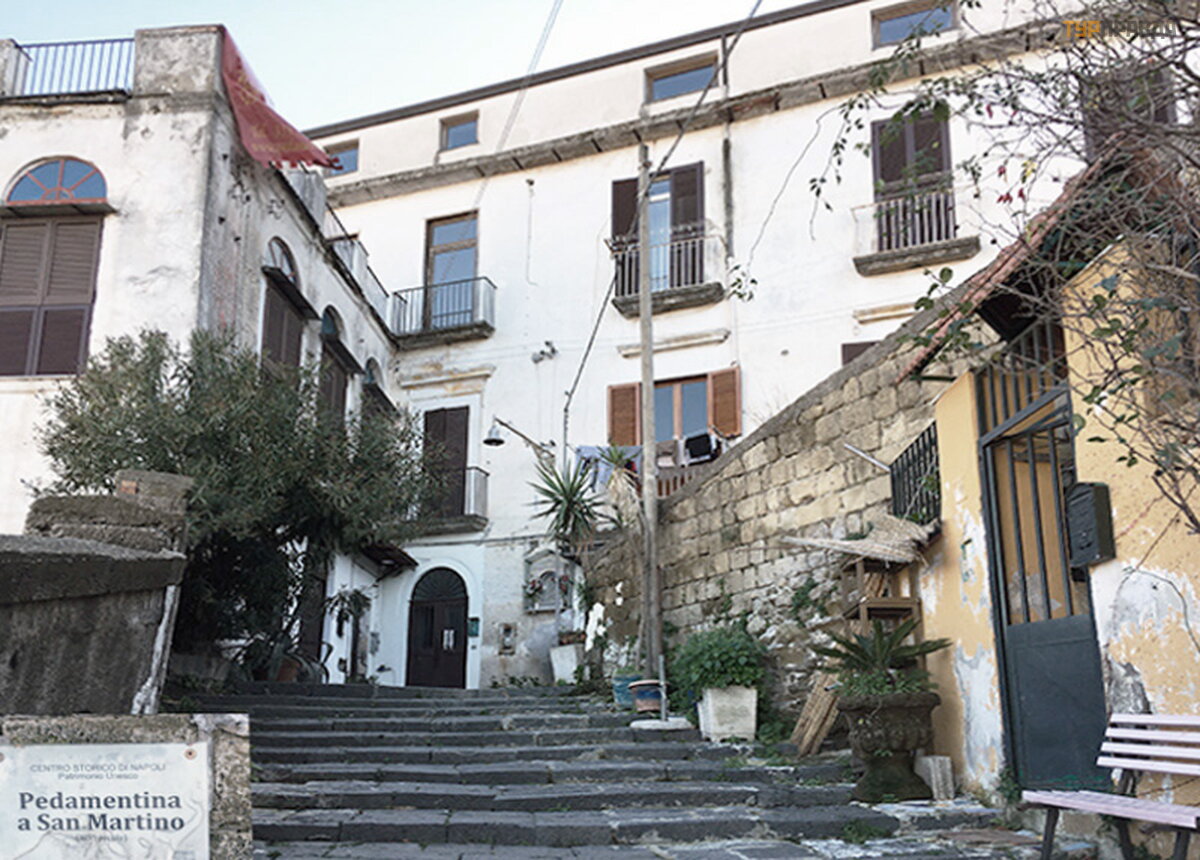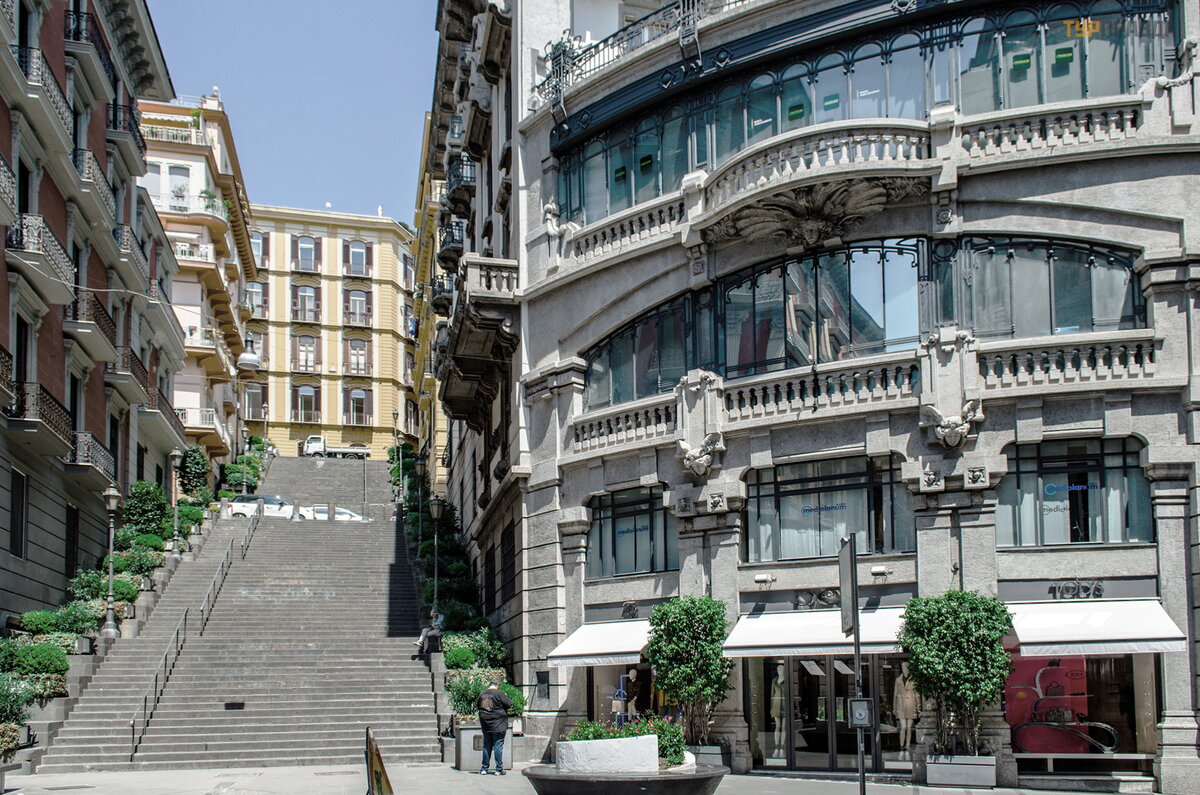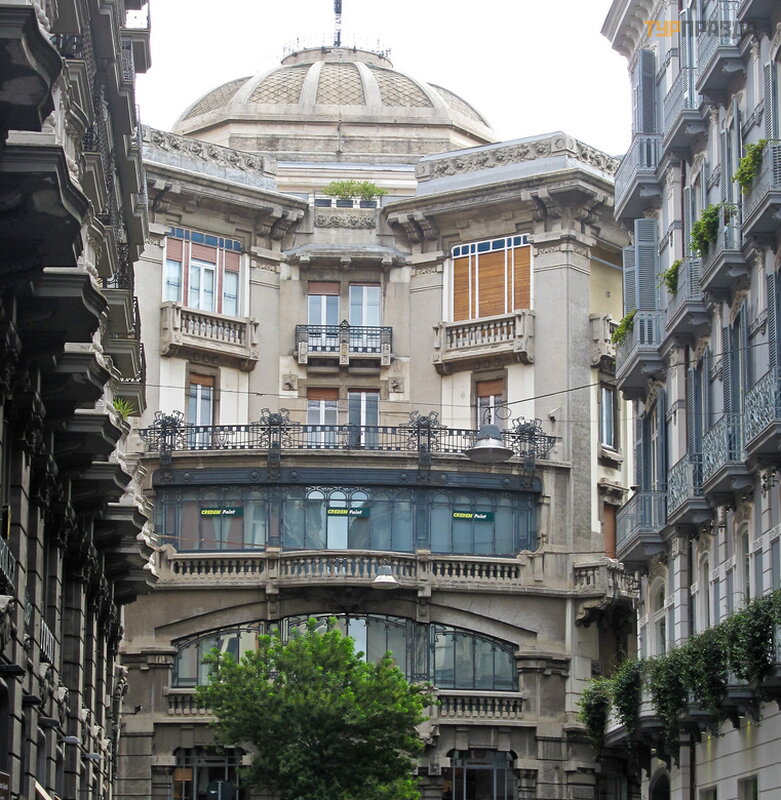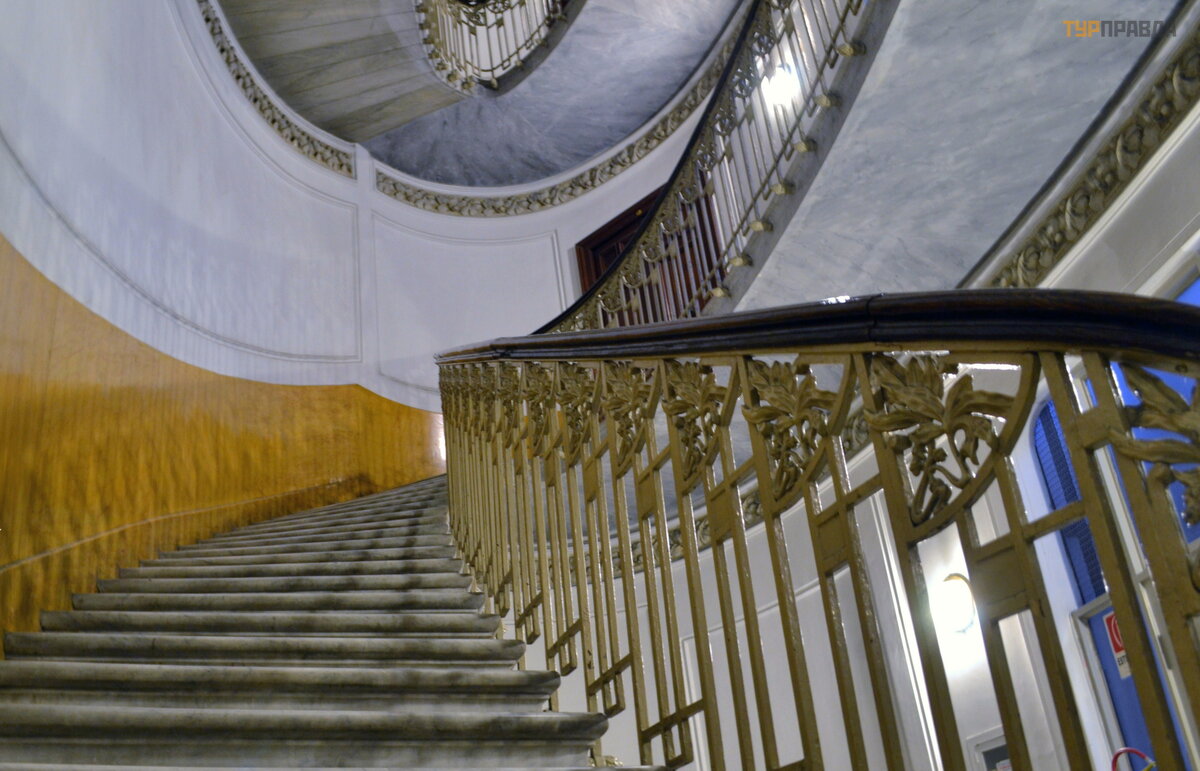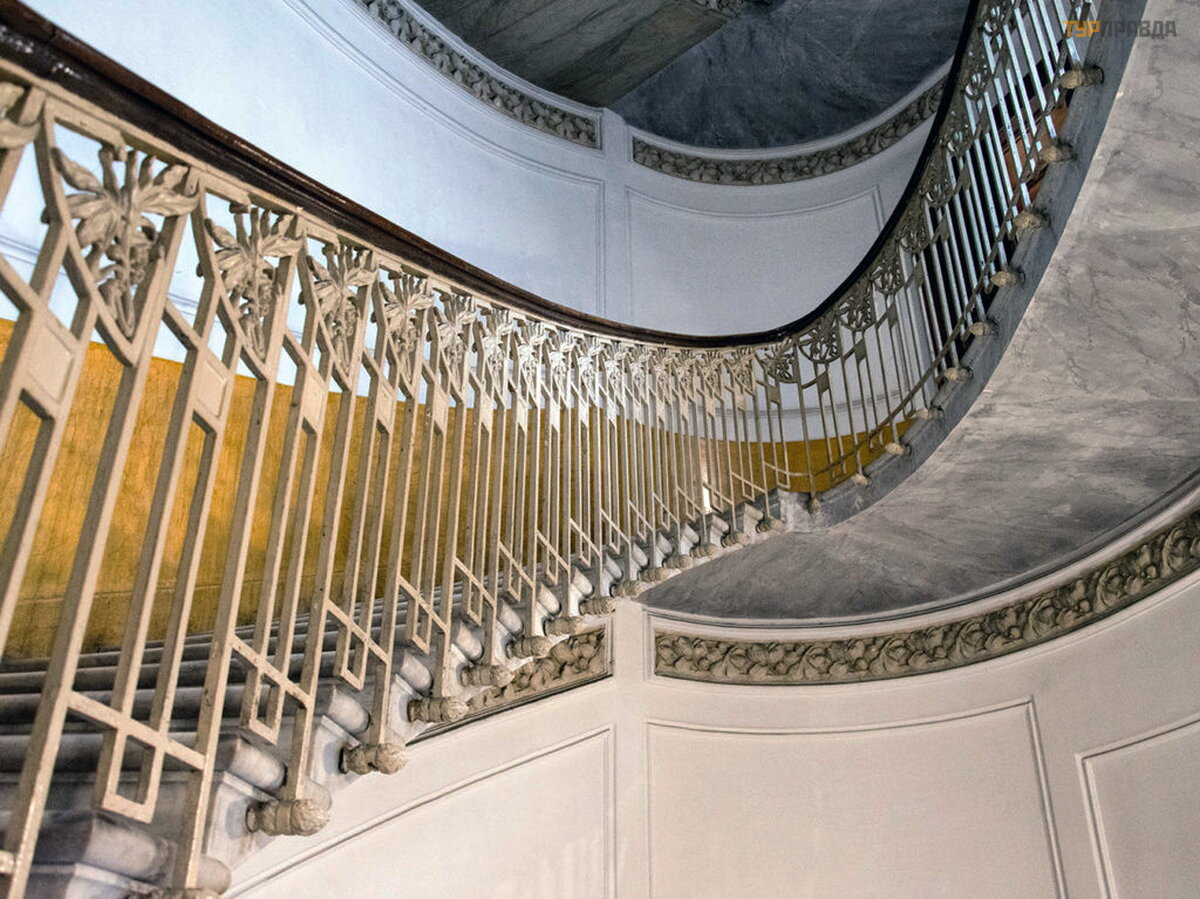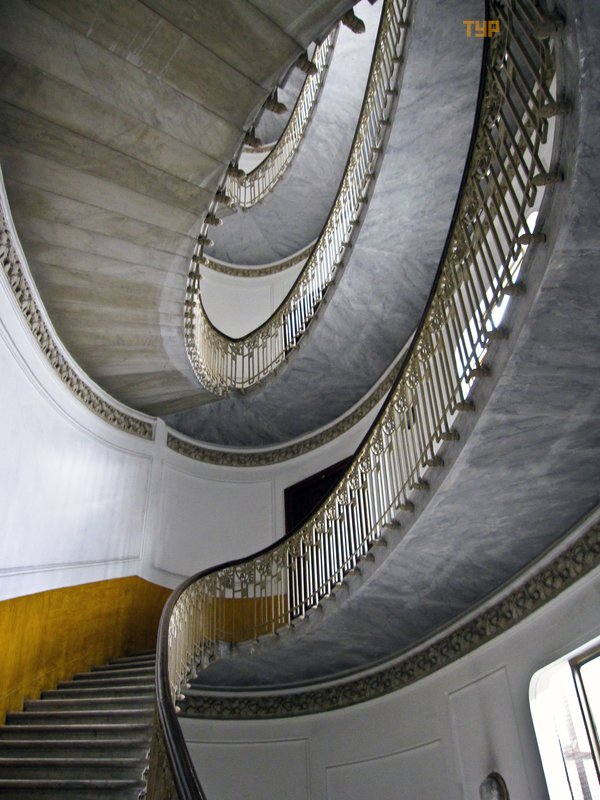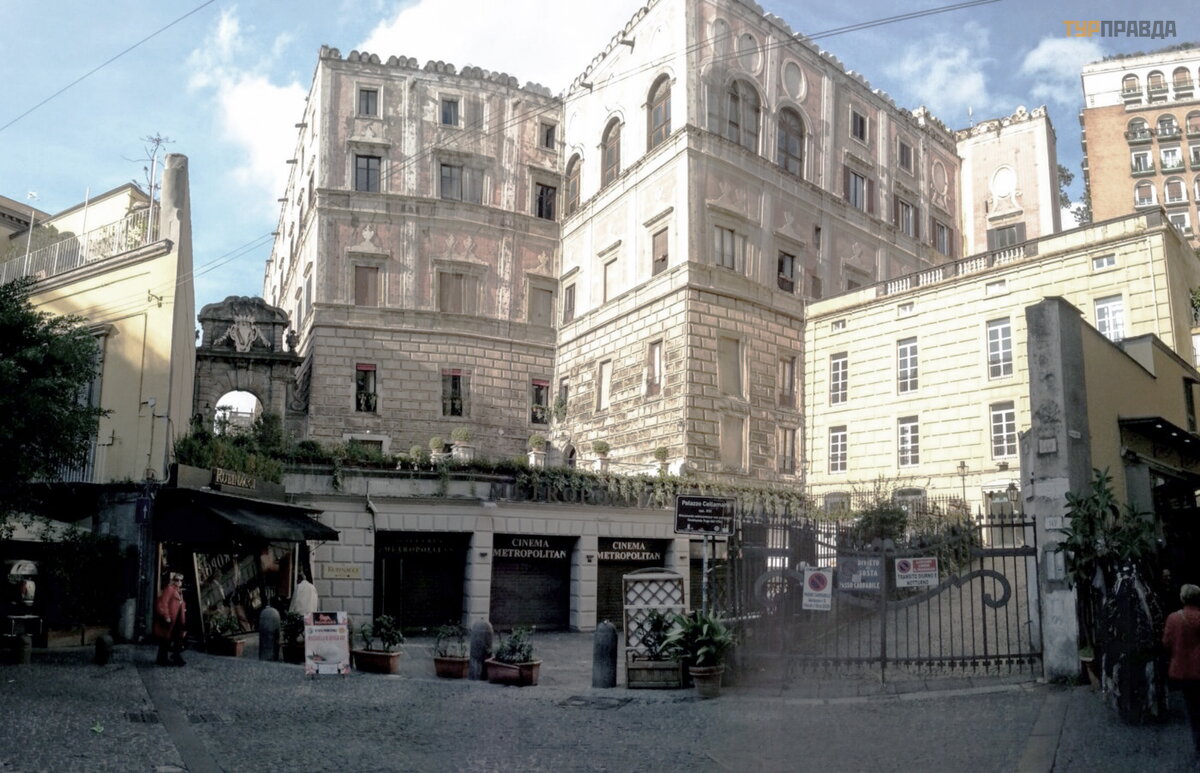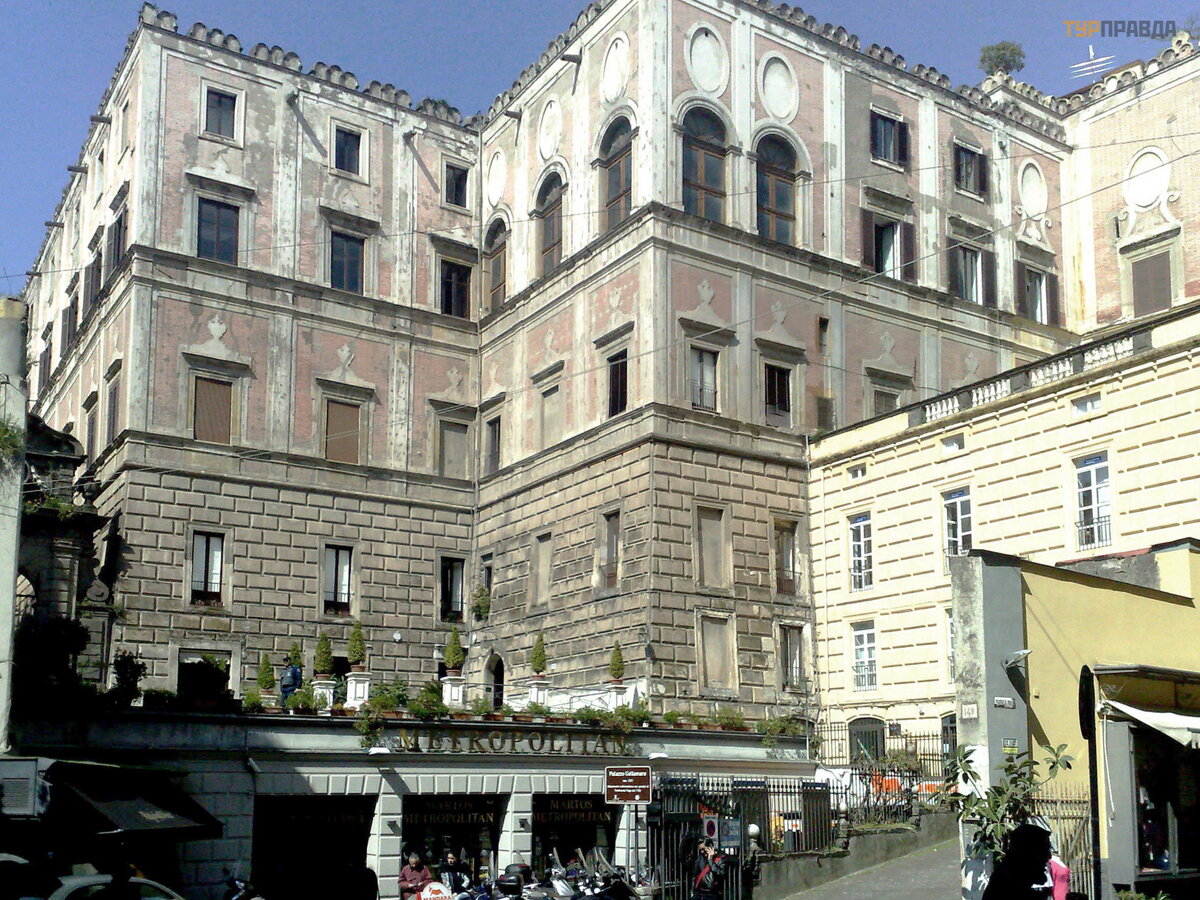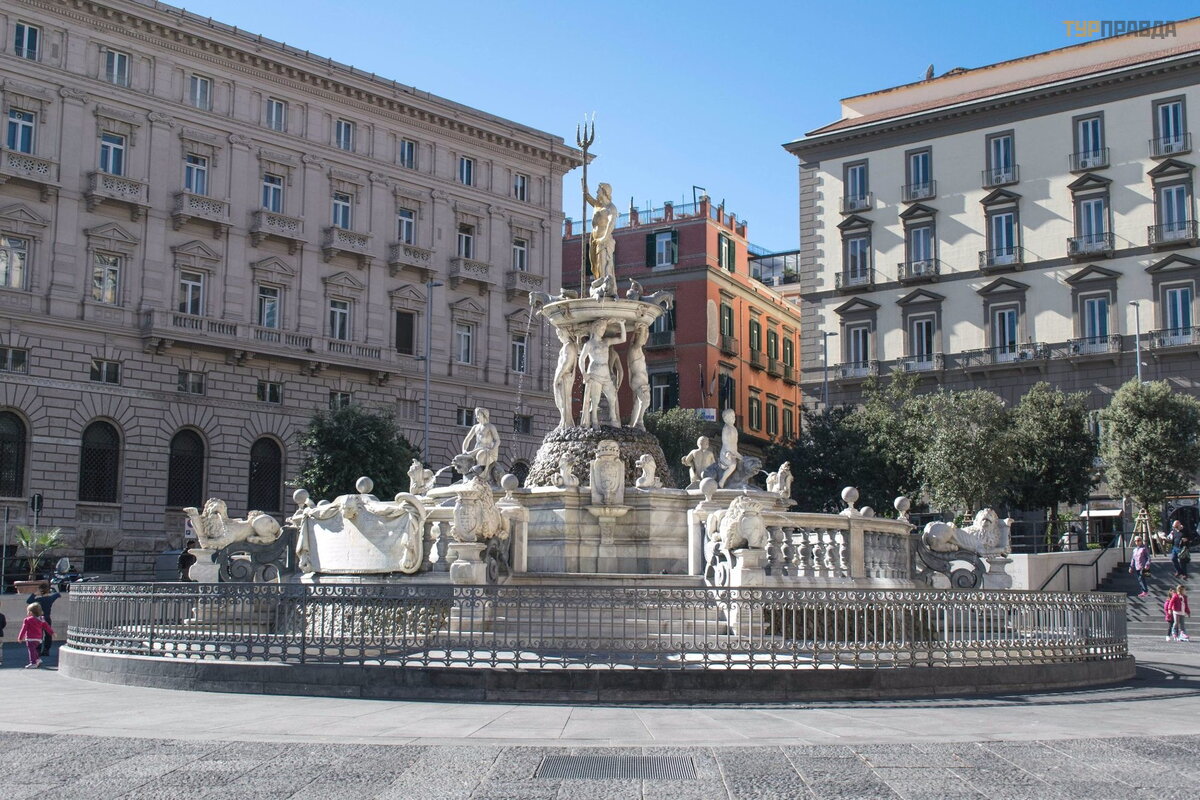My beautiful Naples. Part 7. Walk around the city (continued)

To be continued. Start here >>>
From the church of San Domenico Maggiore, in the back of the block between Via Tribunali and Spaccanapoli, there is the Sansevero Chapel, which we visited on our last trip. For me it was the strongest impression of the sights of Naples.
There is always a long queue at the entrance:
The entrance fee was 6 euros, you could buy an audio guide, but there is no Russian language. In the chapel it is strictly forbidden not only to take pictures, but also for some reason to use guidebooks. The attendants arrive immediately. I had to read in secret. Therefore, the photos are all from the Internet.
The chapel acquired its modern appearance as a result of the reconstruction undertaken by Raimondo de Sangro, the seventh prince of Sansevero, in 1749-1767. Prince Raimondo was known for his wide knowledge of chemistry, literature, philosophy, artillery,
military strategy and other areas of knowledge; he personally supervised the reconstruction of the chapel, involving the best artists and sculptors of his time, determining the themes of their future works and considering their placement in the chapel. As a result, the Sansevero Chapel has become a solid, complete and well-thought-out work of art that reflects the wide knowledge, as well as the Masonic convictions of its creator.
The vault of the temple contains a huge fresco by Francesco Maria Russo, which was called "Paradise of Sansevero" (1749). The composition of the paints with which the fresco was painted was personally compiled by Prince Raimondo; over the past two and a half centuries since its writing, the colors have not faded or faded.
The chapel contains numerous marble tombstones, which are allegories of various virtues that are difficult to decipher without clues.
In the center of the chapel there is a marble sculpture "Christ under the Shroud", created by the master Giuseppe Sanmartino (1753), covering the body of Christ with the fabric of the shroud. Executed with the highest craftsmanship, it seems transparent and light, although it is made of marble. The sculpture "Christ under the Shroud" is a recognized masterpiece of Baroque art, delighting many visitors. Even the great Antonio Canova said that he was ready to give ten years of his life to become the author of this work.
Among the most famous works of art in the chapel, the Chastity statue by Antonio Corradini is the tomb of Cecilia Gaetani,
mother of Prince Raimondo, who died shortly after giving birth.
An even more complex allegory is the monument to Prince Raimondo's father, Antonio de Sangro. The Italian name of this monument, Disinganno, is translated into Russian as "Getting rid of the spell. " Antonio de Sangro, after the death of his young wife, led a disorderly and even reckless life, leaving his son Raimondo to be raised by his grandfather. Realizing the senselessness of such a waste of life, Antonio repented and subsequently took the priesthood.
Disposal of the Enchantment by Francesco Quirolo is the most famous of his works. The monument is valuable for the finest work on marble and pumice, from which the net is made. Quirolo was the only one of the Neapolitan masters who agreed to such a delicate work, the rest refused,
believing that with one touch of the cutter, the network will crumble into pieces.
In the crypt, in two glass cases, the mummified bodies of a man and a woman are displayed in a vertical position. The circulatory system (heart, arteries, veins) remain intact for more than two centuries. To date, there is no satisfactory explanation of the manner in which the preservation of these bodies was achieved. Moreover, anatomy at the time of Prince Raimondo did not have such a clear idea of the structure of the human circulatory system.
Let's go back to Spaccanapoli, here it is called Via Benedetto Croce.
PassingThe Palace of Venice (Palazzo Venezia), built in the 15th century and presented in 1412 by King Ladislao II of Naples to the Venetian Republic for consuls general in Naples. You can enter the palace, go up to the terrace,
drink coffee, there is a souvenir shop.
Entrance to the palace is through an archway where you can wear the Capone family coat of arms. To the left of the entrance is an eighteenth-century open staircase with three arches. the historic garden of Palazzo Venezia, located on one of the loggias. You can climb the stairs of the palace to the garden.
We approach the huge monastery complex Santa Chiara (Santa Chiara), dedicated to Saint Clare of Assisi, founder of the Clarissinian order.
The construction of the basilica began in 1310 at the behest of Robert of Anjou and his wife Sancha of Mallorca on the site of a Roman bath complex from the 1st century AD. For this, the architect Gallardo Primario was called.
To the left of the church there is a bell tower,
the construction of which was begun in 1338, but due to lack of funding after the death of Robert of Anjou and the earthquake of 1456, it was completed only in 1604.
From the "decorations" inside the church of Santa Chiara - frescoes by Giotto, as well as the sarcophagi of the Angevin kings (predecessors of the Aragonese rulers). In the center of the rear wall rises the tomb of Robert of Anjou.
Most visitors are attracted not by the church itself, but by the monastery courtyard of the Sisters of Clarisse. It was added much later than the church - in 1739. The walls of its galleries are painted with frescoes, and the benches and columns are lined with majolica tiles. The cloister itself was named majolica.
The majolica cloister is a 1739 work by Domenico Antonio Vaccaro. The architect retained the strict Gothic structure of the gallery, remaking only the garden alleys, which, however, were turned into an amazing work of art.
Two fountains from the 14th century were moved to the garden, one of which is decorated with four sculptures of lions. The brothers Donato and Giuseppe Massa decorated the columns along the alleys with majolica with floral ornaments. The tiles decorating the benches, set in the shade of orange and lemon trees, were painted with genre scenes from ancient mythology and the rural life of the Neapolitans, landscapes, scenes from the everyday life of the monastery. Entrance to the cloister is paid, 6 euros.
Santa Chiara is bordered by a spacious area Piazza del Gesu Nuovo with the obelisk of the Immaculate Conception (Guglia del Immacolata) in the center. This majestic baroque monument was erected in the 18th century according to the project of Giuseppe Genuino. The obelisk is crowned with a copper sculpture representing the iconographic image of Our Lady of the Immaculate Conception: the Virgin Mary is depicted without a Child, under her feet is a month, she is surrounded by symbols of purity.
The church Gesu Nuovo (Chiesa del Gesu Nuovo) stands out in the square with an unusual facade of stone slabs in the shape of a faceted diamond.
The Jesuits already had a temple in Naples,
The church was called New - Gesu Nuovo, transformed by the Jesuits at the turn of the 16th century. from the Renaissance Palazzo Sanseverino.
The three-nave interior in the shape of a Greek cross is crowned with a dome restored after the earthquake of 1688
On the entrance wall there is a recently restored huge fresco "The Expulsion of Heliodra from the Temple" (F. Solimena, 1725).
The floors, walls of the naves and chapels are finished with marble.
The main altar made of precious stones.
Wooden gilded icon cases of the 17th century. in the Chapel of San Francesco de Geronimo.
In the second chapel on the right lie the remains of St. Giuseppe Moscati (1880-1927), a Neapolitan doctor without silver, canonized in 1987.
and very revered by the townspeople.
If you head up Via Santa Anna from Piazza Gesu Nuovo. . .
. . . then we will go out to the beautiful square Monteolivetowith a fountain in the center, designed by Cosimo Fandzago (1671-1673). The bronze statue of King Charles II of Spain is the main part of the fountain.
Behind the fountain of the Palazzo Orsini di Gravina (1513-1549), there is now the Faculty of Architecture of the University of Naples.
Moving further along Via Monteoliveto, you can see such interesting buildings:
We reach the entrance to St. Anne of Lombard Church (Chiesa di Sant'Anna dei Lombardi), nondescript facade hides true treasures.
The church has a stunning mosaic floor of colored marble, on the walls and ceilings (but not all) Renaissance frescoes, sculpted altars and tombstones, and in the sacristy amazing mosaic wood panels. The refectory was lavishly frescoed by Giorgio Vasari.
Further - the oratory of San Sepolcro (St. Sepulcher), consisting of two rooms. In the second room - one of the masterpieces of church decoration, "Pieta" (Lamentation of Christ), sculpted in 1492 by the Modena sculptor Guido Mazoni.
The sacristy was painted by the famous Renaissance artist and prominent art historian Giorgio Vasari; it contains wooden armchairs decorated with inlaid work by the eminent master Fra Giovanni da Verona (1506-1510).
Let's return to Spaccanapoli,
we cross Via Toledo and turn to the picturesque area of Montesanto (Montesanto).
Here is the railway station with two branches of the Cumana and Circumflegrea trains, a metro station and one of the four funiculars that connects the highest part of the Vomero hill with the city center. The length of the line is 825 meters. There is also an intermediate station on this line.
There is also a small market here:
We get off at the final station "Morgen", at the exit the cheapest paid toilet (automatic cabin) that I saw - 20 cents. Very handy.
Vomero is now one of the most prestigious areas of Naples. This peaceful place is rich in museums, monuments, shops and historic cafes.
This area is inhabited by wealthy middle class people, as a result, there is less garbage and chaos on the streets. They get to it from the center on one of 3 funiculars (time 5-10 minutes, departure frequency 10 minutes), there is also a metro station (Vanvintelli). The area is very picturesque with great views.
There is also the city park Villa Floridiana. In 1817 the villa was acquired by King Ferdinand I. The villa was bought for the wife of Ferdinand I, Lucia Partanno Migliacci. And the villa received the name Floridiana in her honor, since Ferdinand's wife was the Duchess of Floridian.
Sant Elmo Castle is a medieval fortress,
built in 1329-1343 near the Carthusian monastery of San Martino They are visible from Vomero Hill from almost anywhere in the city.
Initially, the castle served as a fortification and protection of Naples from the sea, taking part in almost all the historical events of the city. It is built in the form of a star with six ramparts and seems to dominate the city landscapes.
Next to the castle is the observation deck of Belvedere San Martino, from which the whole of Naples is at a glance.
The black "crack" is exactly the same Spaccanapoli. This time, a strong wind was blowing at the top, it was even difficult to keep the camera straight.
Below the castle is the monastery of San Martino (Certosa di San Martino), built in 1368, and the church of the same name.
Rebuilt several times. The modern look was designed by the same famous Cosimo Fandzago. Currently, the San Martino Museum (Certosa e Museo di San Martino) is open within the walls of the monastery. Entrance is paid, the cost is 6 euros.
We did not go to the monastery this time, but we must leave something for the next trip.
We decided to go back on foot along the famous Via Pedamentina (Pedamentina San Martino), it is a staircase, they say, consisting of 414 steps, passing along the slope of the Vomero hill and connecting with the historical center of Naples. Walking along it is interesting, but tiring, it took minutes to go down twenty.
There were almost no people, although it used to be very crowded here. Here is a frame from the movie "Yesterday, Today Tomorrow" with Sophia Loren, a native of these places.
Slowly we reached the beginning of the stairs to Corsa Vittorio Emanuel.
After lunch, we already felt tired and we had already driven a few bus stops along the Corso, and then went down the stairs.
To see Palazzo Mannajuolo, the first all-reinforced concrete palace in Naples, located on Via Filangeri, and one of the most successful examples of Liberty architecture in the city. Commissioned by the entrepreneur and engineer Giuseppe Mannajuolo, this outstanding palazzo was built between 1910 and 1911.
The western facade of the building is especially impressive, its alternating convex and concave elements are topped with an artificial dome.
However, the main attraction is the building's cinematic covered staircase, a stunning elliptical creation adorned with wrought-iron parapets and embossed marble steps.
Then we went along the familiar road along the pedestrian via Chiaia. On the way, we turned to look at the Palazzo Chelamare - one of the most beautiful Renaissance palaces in the city, built in the 16th century. Then a chapel was added, the author of the project was the famous Italian architect Ferdinando Fugu.
Again we pass through Plebescito Square to the Fountain of Neptune, which is now located on the huge Piazza Municipio (Piazza Municihio),
which stretches from the City Hall to the Marine Station.
The Fountain of Neptune moved from place to place several times in its history. The monument itself was built by Giovanni Domenico D'Auria according to the design of the Swiss architect Domenico Fontana at the beginning of the 17th century. The sculptors-architects Michelangelo Naccherino, Pietro Bernini and Cosimo Fandzago also took part in the creation of the fountain.
This concludes our trip to Naples. I advise everyone to visit this beautiful, lively city.
